#a film released in the late 20th century
Explore tagged Tumblr posts
Text
Aziraphale’s secret investigation and overlooked Clues

Remember this frame from Good Omens S02E06? Apparently Aziraphale had been using the empty carton box brought by Jim to store things in. It became a new home to at least two out of three “Lost Quartos” — the supposedly lost Shakespeare plays briefly but hilariously mentioned in the Good Omens book — as well as a very mysterious legal document.
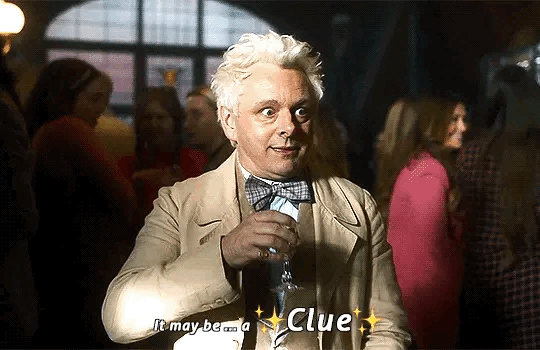
Thought probably half of the Good Omens analysts here, including the ever so wonderful @fuckyeahgoodomens, who managed to find some information about the deceased John Gibson from New Cumnock (1855 - 1905).
Unfortunately the most interesting thing about this early 20th century provincial postmaster was his youngest child James (1894 - 1973), a quite famous stage (West End!) and film actor immortalized on screen in The Master of Ballantrae (1962), Witch Wood (1964) and Kidnapped (1963).
After that particular discovery the fandom-wide search seemingly led nowhere and the topic died a premature death.
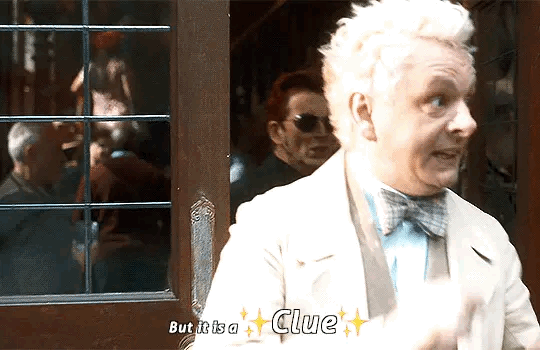
And I almost figured it out seven months ago.
“But Yuri, you’re so clever. How can somebody as clever as you be so stupid?”, you probably want to shout across a busy London street at this point. Well, let me tell you. Much like Aziraphale, I'm blindingly intelligent for about thirty seconds a day. I do not get to choose which seconds and they are not consecutive.
Only tonight the stars have aligned in an ineffable way.
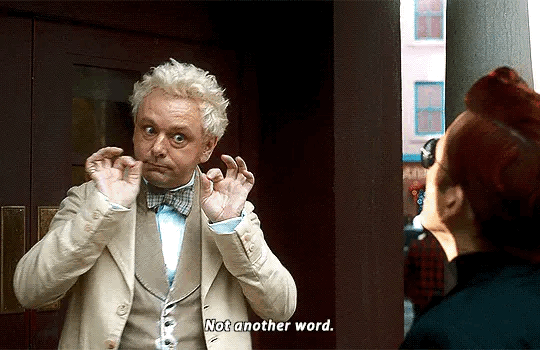
For those of you who don’t follow this account, some time ago I’ve realized that John Gibson isn’t the only testator whose estate was being investigated by Aziraphale right before The Whickber Street Traders and Shopkeepers Association monthly meeting.
If you watch S2 finale closely enough, you should notice that Crowley not only stress cleans Aziraphale’s bookshop — he also goes through the books and papers on his desk between the last three angels leaving the bookshop and Maggie and Nina’s intervention. A seemingly permanent arrangement of the props post-shooting, visible in detail both on Radio Times tour and SFX magazine photo shoot, sheds even more light on this detail.



The close-ups published after S2 release are legible enough to refer us to a much more prominent historical figure, Josiah Wedgwood (1730 – 1795) — an English potter, entrepreneur and abolitionist. Founding the Wedgwood company in 1759, he developed improved pottery bodies by systematic experimentation, and was the leader in the industrialisation of the manufacture of European pottery.

Long story short, I transcribed the handwritten pages abandoned on Aziraphale’s desk, found out the source and the full text of what could be identified as Wedgwood’s last will and testament, took a walk to visit his Soho workshop, and proceeded to write a lengthy meta analysis about it.
I was today’s years old when I realized that there’s something else connecting those two dead British men.


The Scottish Post Office Directory of 1903 recorded John Gibson from New Cumnock as a “stationer and china dealer” (above) operating from the shop located in the town’s post office building.
Indeed, a close look at his post office shop window in the Henderson Building (below, bottom left) reveals an artful display of fine china and pottery next to postcards printed by Gibson.

There are multiple ways to connect this surprising link with possible S3 plot points, obviously, but it’s getting late, so let’s just name the two most important ones.
You’ve probably heard of the Holy Grail, maybe from Monty Python or Good Omens S01E03 1941 flashback. Depending on the version of the story, if can be a cup, a chalice, a bowl, or a saucer — but almost always a dish or a vessel connected personally, physically and metaphysically to Jesus (unless you’re partial to Wolfram von Eschenbach’s idea that the Grail was a stone, the sanctuary of the neutral angels who took neither side during Lucifer's rebellion).

A slightly more obscure dish related to the Son of God appears in the sixteenth chapter of the Book of Revelation as a vital part of His Second Coming. The Seven Bowls (or cups, or vials) of God’s Wrath are supposed to be poured out on the wicked and the followers of the Antichrist by seven angels:
Then I heard a loud voice from the temple telling the seven angels, “Go and pour out on the earth the seven bowls of the wrath of God.” So the first angel went and poured out his bowl on the earth, and harmful and painful sores came upon the people who bore the mark of the beast and worshiped its image.
The second angel poured out his bowl into the sea, and it became like the blood of a corpse, and every living thing died that was in the sea.
The third angel poured out his bowl into the rivers and the springs of water, and they became blood. And I heard the angel in charge of the waters say, “Just are you, O Holy One, who is and who was, for you brought these judgments. For they have shed the blood of saints and prophets, and you have given them blood to drink. It is what they deserve!” And I heard the altar saying, “Yes, Lord God the Almighty, true and just are your judgments!”
The fourth angel poured out his bowl on the sun, and it was allowed to scorch people with fire. They were scorched by the fierce heat, and they cursed the name of God who had power over these plagues. They did not repent and give him glory.
The fifth angel poured out his bowl on the throne of the beast, and its kingdom was plunged into darkness. People gnawed their tongues in anguish and cursed the God of heaven for their pain and sores. They did not repent of their deeds.
The sixth angel poured out his bowl on the great river Euphrates, and its water was dried up, to prepare the way for the kings from the east. And I saw, coming out of the mouth of the dragon and out of the mouth of the beast and out of the mouth of the false prophet, three unclean spirits like frogs. For they are demonic spirits, performing signs, who go abroad to the kings of the whole world, to assemble them for battle on the great day of God the Almighty. (“Behold, I am coming like a thief! Blessed is the one who stays awake, keeping his garments on, that he may not go about naked and be seen exposed!”) And they assembled them at the place that in Hebrew is called Armageddon.
The seventh angel poured out his bowl into the air, and a loud voice came out of the temple, from the throne, saying, “It is done!” And there were flashes of lightning, rumblings, peals of thunder, and a great earthquake such as there had never been since man was on the earth, so great was that earthquake. The great city was split into three parts, and the cities of the nations fell, and God remembered Babylon the great, to make her drain the cup of the wine of the fury of his wrath. And every island fled away, and no mountains were to be found. And great hailstones, about one hundred pounds each, fell from heaven on people; and they cursed God for the plague of the hail, because the plague was so severe.

#good omens#good omens meta#good omens analysis#aziraphale#aziraphale’s bookshop#set design#good omens props#the good omens crew is unhinged#john gibson#josiah wedgwood#fine china#pottery#holy grail#seven bowls#second coming#yuri is doing her thing
89 notes
·
View notes
Text

NEXT PROJECTS
THE BRUTALIST 🗽
Director: Brady Corbet
Role: Erzsébeth Toth
Cast: Adrien Brody, Guy Pearce, Joe Alwyn, Raffey Cassidy, Stacy Martin, Emma Laird, Alessandro Nivola, Isaac de Bankolé
Synopsis: When visionary architect László Toth and his wife Erzsébet flee Europe to rebuild their legacy and witness the birth of modern America, their lives are changed forever by a mysterious and wealthy client.
Release date: January 24 (UK and USA), worldwide late January/February 2025
TRAIN DREAMS 🚂
Director: Clint Bentley
Role: Gladys Grainer
Cast: Joel Edgerton, Kerry Condon, William H. Macy, Clifton Collins Jr.
Synopsis: Robert Grainer, an average man living in extraordinary times, worked as a day laborer in the American West at the beginning of the 20th century. Battered by the death of his family, he struggles to adjust to this new environment.
Status: Completed
Release date: January 26, 2025 - Sundance Film Festival. Worldwide Netflix release date TBA
OH. WHAT. FUN 🎄
Director: Michael Showalter
Role: Channing Clauster
Cast: Michelle Pfeiffer, Chloe Grace Moretz, Dominic Sessa, Havana Rose Liu, Joan Chen, Jason Schwartzman, Maude Apatow, Danielle Brooks, Denis Leary
Synopsis: Centers on Claire (Pfeiffer), who plans a special Christmas but is forgotten by her family. When they realize she's missing, their holiday is at risk until she returns to give them the celebration they deserve.
Status: Post-production
Release date: Holidays 2025
100 NIGHTS OF HERO 🌙
Director: Julia Jackson
Role: Moon | Also executive producer
Cast: Emma Corrin, Maika Monroe, Nicholas Galitzine, Charli XCX, Richard E. Grant, Amir El-Masry, Varada Sethu, Markella Kavenagh
Synopsis: When a charming house guest (Galitzine) arrives at a remote castle, the delicate dynamic between a neglectful husband, his innocent bride Cherry (Monroe), and their devoted maid Hero (Corrin), is thrown into chaos.
Status: Post-production
Release date: TBA
ONE (TV SERIES) 🏎️
Role: TBA | Also executive producer
Synopsis: A family drama series set in the high-stakes world of motor racing - the first officially sanctioned scripted series for Formula 1.
Status: In development (script)
18 notes
·
View notes
Text
‘We don’t disappear after 30’: the Old Lesbians telling a century’s worth of raw, revealing stories
Featuring more than 900 candid interviews, the Old Lesbian Oral Herstory Project seeks visibility for those long denied it

Arden Eversmeyer, the late founder of the Old Lesbian Oral Herstory Project. Photograph: Meghan McDonough
Two women who met as teenagers, fell in love, and stayed together for 69 years – spending all but the last decade of their relationship in the closet. A woman who, in her 70s, finally decided to come out to two friendly lesbian strangers she saw together at the grocery store. One woman, born in 1918, who found herself in a lesbian bar one day, not knowing such a thing existed, and finally felt at home.
These are all stories pulled from the Old Lesbian Oral Herstory Project (OLOHP), a catalogue of more than 900 interviews with lesbian seniors in the US. Arden Eversmeyer, a retired Houston schoolteacher who devoted her retired years to campaigning for visibility for older lesbians, who she felt were missing from the cultural discussion, began interviewing women in 1998.
She grew a team of interviewers – all of them also old lesbians, as they call themselves – to travel around the country speaking to women. These transcripts, audio recordings, and photos of the subjects live in an archive at Smith College in Northampton, Massachusetts. After Eversmeyer’s death at age 91 in November 2022, a dedicated group of friends and fellow activists took up the cause. Last month Meghan McDonough, a Brooklyn-based film-maker, released a documentary called Old Lesbians telling the story of OLOHP, commissioned by Guardian Documentaries.

Barb Kucharczyk speaks in a scene from the film. Photograph: Meghan McDonough
Eversmeyer and her team recruited interview subjects through a word-of-mouth network, and by placing ads at venues such as women’s music festivals or the free magazine Lesbian Connection. The only requirement was that the woman be over 70 years old and identify as a lesbian – she didn’t have to be out publicly, and could remain anonymous. (The age requirement has since been loosened.)
“Arden’s famous quote is, ‘You don’t have to climb Mount Everest to have an interesting life story, because the the fact that you are a lesbian in our culture makes your life story interesting,’” said Barb Kucharczyk, an air force veteran and OLOHP interviewer who served more than two decades in the military, including under the discriminatory “don’t ask, don’t tell” policy.
Interviews are conducted loosely and conversationally. Not every question relates to a woman’s sexuality. There are a few standard questions: where were you born? what did your family look like? What did your folks do for a living? But the point is mostly to make women feel comfortable and open up.
“We’ve tried to make it as gentle of an experience as we can for the women,” said Kucharczyk, who is 76 and lives in Sumter, South Carolina. “It becomes a chronological discussion of their life story. At some point in time, they will talk about being a lesbian. But we don’t walk into the door with 47 questions about how they found out they were, or how they were treated. We want the woman to tell her own story, and if the details about her lesbian lifestyle are slim, that’s OK.”
Still, the project is a raw and revealing look at what life was like for lesbians in the 20th century. Women who came of age before Stonewall and the sexual revolution describe what Kucharczyk calls “hidden lifestyles” that they kept secret, living in fear for their safety. There are harrowing descriptions of conversion therapy, ostracism and physical attacks.
(If clicking the link above doesn't work, here's the direct link to the documentary: https://www.theguardian.com/world/ng-interactive/2024/may/22/old-lesbians-reclaiming-old-age-and-queerness-through-storytelling)
Ethyl “Ricci Cortez” Bronson, an exotic dancer and member of the Burlesque Hall of Fame, who later opened the first “gay girls’ bar” in Houston, told Eversmeyer during an interview that took place shortly before Bronson’s death in 2008 that her club was regularly raided by cops. “A lot of the girls in slacks and pants had been hauled off to jail in the raids,” she said. “They even put me in handcuffs and carried me out to the police car. In my own bar! This is what we went through to get open bars, open gay bars.”
Some of the women interviewed for the project asked to speak anonymously, or on certain conditions, like that their name only be revealed after they died. This did not affect their candor when speaking on the record. “Women were open with us as long as they knew that this was not going to be published,” said Edie Daly, an 87-year-old retired intensive care nurse who splits her time between Florida and Massachusetts. “Some of these stories are still closed, because even though they have passed, they were in fear of outing themselves or someone else.”
Daly said some women were able to break through their hesitancy because they wanted to leave a record of what had happened to them. “We talk about how we would love to know what the suffragists’ individual stories were, and we don’t have that, because a lot of women’s stories are lost,” she said. “Women have been erased from history, and so this is our attempt to rectify that in some small way.”

Edie Daly holds up a blue t-shirt with the words 'THIS is what an OLD LESBIAN looks like!' at home in Northampton, Massachusetts. Photograph: Meghan McDonough
Lillian Faderman, an award-winning scholar of lesbian history and professor emeritus at Fresno State in California, sat for her own interview with Eversmeyer. When she came out in 1950s Los Angeles, she used fake IDs to get into what were then called “gay girls’ bars”.
“As a young lesbian, my feeling was that what happened when you reach 30 or older was that you probably died,” Faderman said. “There were simply no role models, and I don’t think it’s quite as bad today because of social media, but for the most part, I think that young lesbians still have no notion that we don’t disappear after 30. I think it’s important for them to understand that they have a future outside of youth.”
Faderman hopes that the interviews “send a message to the people in our community for posterity, that we are here and flourishing”.
“We’ve always been here,” Daly added. “But now we have visibility, and a voice. And it’s not just visibility of old lesbians, it’s the visibility of all strong women.”
This June, another Pride month unfurls over the backdrop of attacks on LGBTQ+ Americans. The FBI has warned that celebrations could be targeted by terrorists, and Target rolled back its Pride merchandise after last year saw conservative backlash that in some instances led to angry shoppers confronting workers. That’s partly why Kucharczyk believes it’s more important than ever to look toward the past.
“Does history repeat itself? Absolutely,” Kucharczyk said. “You’re watching it happen right here, right now. I hope the message that young folks take away is to be aware
of this history, because if you’re aware, you can see the tidal wave that’s coming up.”
30 notes
·
View notes
Text
THIS DAY IN GAY HISTORY
based on: The White Crane Institute's 'Gay Wisdom', Gay Birthdays, Gay For Today, Famous GLBT, glbt-Gay Encylopedia, Today in Gay History, Wikipedia, and more … January 4



1750 – France Bruno Lenoir and Jean Diot are caught having sex in public for which they are arrested. A year later they were executed. There was general surprise in France at the severity of their sentence. Their execution was the last in France for consensual sodomy.

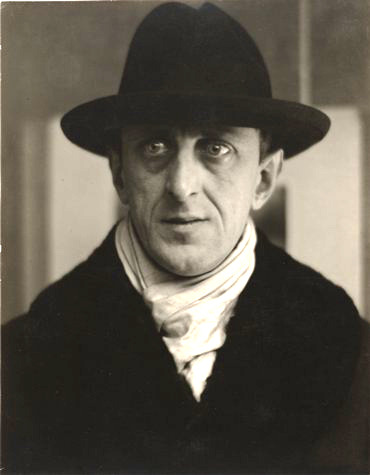
1877 – Marsden Hartley (d.1943) was an American Modernist painter, poet, and essayist. Hartley was born in Lewiston, Maine, where his English parents had settled.
In 1898, at age 22, Hartley moved to New York City to study painting at the New York School of Art. Hartley was a great admirer of Albert Pinkham Ryder and visited his studio in Greenwich Village as often as possible. His friendship with Ryder inspired Hartley to view art as a spiritual quest.
Hartley first traveled to Europe in April 1912, and he became acquainted with Gertude Stein's circle of avante-garde writers and artists in Paris. Stein, along with Hart Crane and Sherwood Anderson, encouraged Hartley to write as well as paint.
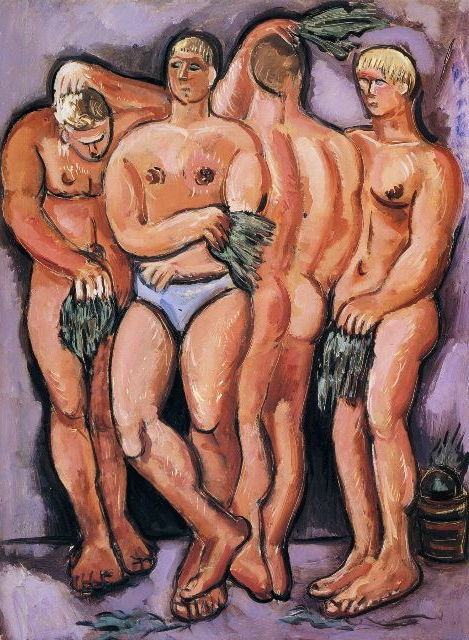
Finnish-Yankee sauna
In 1913, Hartley moved to Berlin, where he continued to paint. Many of Hartley's Berlin paintings were further inspired by the German military pageantry then on display, though his view of this subject changed after the outbreak of World War I, once war was no longer "a romantic but a real reality." The earliest of his Berlin paintings were shown in the landmark 1913 Armory Show in New York.
In Berlin, Hartley developed a close relationship with a Prussian lieutenant, Karl von Freyburg, who was the cousin of Hartley's friend Arnold Ronnebeck. References to Freyburg were a recurring motif in Hartley's work, most notably in Portrait of a German Officer (1914). Freyburg's subsequent death during the war hit Hartley hard, and he afterward idealized their relationship. Many scholars believe Hartley to have been gay, and have interpreted his work regarding Freyburg as embodying his homosexual feelings for him.

Portrait of a German Soldier
In addition to being considered one of the foremost American painters of the first half of the 20th century, Hartley also wrote poems, essays, and stories.
Cleophas and His Own: A North Atlantic Tragedy is a story based on two periods he spent in 1935 and 1936 with the Mason family in the Lunenburg County, Nova Scotia, fishing community of East Point Island. Hartley, then in his late 50s, found there both an innocent, unrestrained love and the sense of family he had been seeking since his unhappy childhood in Maine. The impact of this experience lasted until his death in 1943 and helped widen the scope of his mature works, which included numerous portrayals of the Masons.
He wrote of the Masons, "Five magnificent chapters out of an amazing, human book, these beautiful human beings, loving, tender, strong, courageous, dutiful, kind, so like the salt of the sea, the grit of the earth, the sheer face of the cliff." In Cleophas and His Own, written in Nova Scotia in the fall of 1936, Hartley expresses his immense grief at the tragic drowning of the Mason sons. The independent filmmaker Michael Maglaras has created a feature film Cleophas and His Own, released in 2005, which uses a personal testament by Hartley as its screenplay.

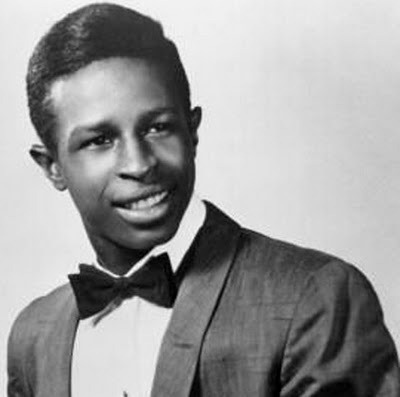
1946 – Arthur Conley aka Lee Roberts (d.2003) was a U.S. soul singer, best known for the 1967 hit "Sweet Soul Music".
Conley was born in McIntosh County, Georgia, U.S., and grew up in Atlanta. He first recorded in 1959 as the lead singer of Arthur & the Corvets. With this group, he released three singles in 1963 and 1964 – "Poor Girl", "I Believe", and "Flossie Mae" – on the Atlanta based record label, National Recording Company.
In 1964, he moved to a new label (Baltimore's Ru-Jac Records) and released "I'm a Lonely Stranger". When Otis Redding heard this, he asked Conley to record a new version, which was released on Redding's own fledgling label Jotis Records, as only its second release. Conley met Redding in 1967. Together they rewrote the Sam Cooke song "Yeah Man" into "Sweet Soul Music", which, at Redding's insistence, was released on the Atco-distributed label Fame Records, and was recorded at FAME studios in Muscle Shoals, Alabama. It proved to be a massive hit, going to the number two position on the U.S. charts and the Top Ten across much of Europe. "Sweet Soul Music" sold over one million copies, and was awarded a gold disc.
After several years of hits singles in the early 1970s, he relocated to England in 1975, and spent several years in Belgium, settling in Amsterdam (Netherlands) in spring 1977. At the beginning of 1980 he had some major performances as Lee Roberts and the Sweaters in the Ganzenhoef, Paradiso, De Melkweg and the Concertgebouw, and was highly successful. At the end of 1980 he moved to the Dutch village of Ruurlo, legally changing his name to Lee Roberts — his middle name and his mother's maiden name. He promoted new music via his Art-Con Productions company. Amongst the bands he promoted was the heavy metal band Shockwave from The Hague. A live performance on January 8, 1980, featuring Lee Roberts & the Sweaters, was released as an album entitled Soulin' in 1988.
Conley was gay, and several music writers have said that his homosexuality was a bar to greater success in the United States and one of the reasons behind his move to Europe and his eventual name change. In 2014, rock historian Ed Ward wrote, "[Conley] headed to Amsterdam and changed his name to Lee Roberts. Nobody knew 'Lee Roberts,' and at last Conley was able to live in peace with a secret he had hidden – or thought he had – for his entire career: he was gay. But nobody in Holland cared."
Conley died from intestinal cancer in Ruurlo, Netherlands aged 57 in November 2003. He was buried in Vorden.


1960 – Michael Stipe has been the lead singer, lyricist, and composer for the successful rock band R.E.M. for over two decades. Among his best-known songs is "Losing My Religion," which rose to number 4 on the United States rock charts in 1991. He has also become involved in film and now has his own production companies.
The child of a career military officer, John Michael Stipe, born in Decatur, Georgia, grew up on bases around the United States and also in Germany, and spent his high school years in Illinois.
Stipe returned to Georgia for college, enrolling as an art student at the University of Georgia in 1978. There he met fellow alternative music fans Peter Buck, Mike Mills, and Bill Berry. Within a year all four had dropped out of college to forge a career as a rock band, R.E.M.
They went on a concert tour and in 1980 put out their first single, "Radio Free Europe." Its success, particularly on college radio stations, won them a recording contract. Their first full-length album, Murmur (1983), was chosen as Album of the Year by Rolling Stone magazine.
Stipe's vigor on stage contributed to the success of R.E.M.'s concerts. He interacted with the audience and charged about with boundless energy. He blasted his often dark and brooding lyrics into the microphone with such force that they were frequently barely intelligible.
In addition to composing and performing, Stipe has also directed several of R.E.M.'s music videos and oversees the creation of their album covers.
By 2004 the band had recorded nearly twenty albums with collective sales of almost fifty million copies worldwide, making it one of the most successful in the history of rock music.
With the success of the albums Out of Time (1991) and Automatic for the People (1992), R.E.M. became mainstream music stars. Around 1992, rumors that Stipe had contracted HIV began to circulate. According to Stipe, he did not start the rumor and he does not know who did.
Not that I can tell. I wore a hat that said 'White House Stop AIDS'. I'm skinny. I've always been skinny, except in 1985 when I looked like Marlon Brando, the last time I shaved my head. I was really sick then. Eating potatoes. I think AIDS hysteria would obviously and naturally extend to people who are media figures and anybody of indecipherable or unpronounced sexuality. Anybody who looks gaunt, for whatever reason. Anybody who is associated, for whatever reason - whether it's a hat, or the way I carry myself -as being queer-friendly.
In 1994, with questions still swirling about his sexuality, Stipe described himself as "an equal opportunity lech," and said he did not define himself as gay, straight, or bisexual, but that he was attracted to, and had relationships with, both men and women.
In 1995, he appeared on the cover of Out magazine. Stipe described himself as a "queer artist" in Time in 2001 and revealed that he had been in a relationship with "an amazing man" for three years at that point. Stipe reiterated this in a 2004 interview with Butt magazine. When asked if he ever declares himself as gay, Stipe stated, "I don't. I think there's a line drawn between gay and queer, and for me, queer describes something that's more inclusive of the grey areas."
In 1999, author Douglas A. Martin published a novel, Outline of My Lover, in which the narrator has a six-year romantic relationship with the unnamed lead singer of a successful Athens, Georgia-based, rock band; the book was widely speculated, and later confirmed by its author, to have been a roman à clef based on a real relationship between Martin and Stipe. The two had previously collaborated on two books, both in 1998: The Haiku Year (for which the two had both contributed haikai) and Martin's book of poetry Servicing the Salamander (for which Stipe took the cover photograph).


1965 – Craig Revel Horwood is an Australian-British author, dancer, choreographer, conductor, theatre director, and former drag queen in the United Kingdom. He is also a patron of the Royal Osteoporosis Society.
Horwood is best known as a judge on the popular BBC dancing series Strictly Come Dancing, and until 13 November 2021, as he tested positive for COVID-19 and missed the following week's show, had been the only judge to have appeared in every edition since its inception. He is often seen performing ballroom and Latin routines including, in 2019, a performance themed around Hello, Dolly!.
Horwood has a waxwork in Madame Tussauds Blackpool which has been on display since July 2018. On 20 July 2021, Horwood was given an Honorary Doctor of Arts by the University of Winchester at Winchester Cathedral.
He was born in Ballarat, Australia. His father Phil was a former Royal Australian Navy Lieutenant whose alcoholism had "torn their family apart". He started his career as a dancer in Melbourne, then moved to London to take advantage of the greater opportunities available there and to dance competitively. In 1989, he moved to the UK from Australia, and on 20 August 2011, he became a British citizen.
Revel is Horwood's middle name; it is not double barrelled. In his autobiography, Horwood reveals that at the age of 17, he made money by appearing as a drag queen in bars and clubs and that his relationship with an unnamed celebrity was akin to prostitution.
Horwood was married to Jane Horwood from 1990 to 1992. In December 2014, Horwood informed a reporter from OK! magazine that 'I was bisexual for a long time. I flitted between men and women quite a lot between the ages of 17 and 26. My wife Jane left me for another man. Then I fell in love with a bloke. I have been gay ever since.' His former partner Damon Scott had been a runner up on Britain's Got Talent.
Since early 2018, Horwood has been in a relationship with horticulturist Jonathan Myring. In April 2020 Horwood and Myring announced their engagement. The pair, who met on Tinder, became engaged while in Tasmania.
Horwood became a patron of the Royal Osteoporosis Society in 2009. In this, he has found common ground with Camilla, Queen Consort, the Society's Royal patron (whose mother, like his, had bone disease). The two of them danced the cha-cha-cha together, on a school visit to mark National Osteoporosis Day in 2009.
In January 2015, Horwood revealed on ITV's Loose Women that he suffered from anorexia and body dysmorphia as a teenager and young dancer, as a result of trying to make himself look like other young men, and other dancers in particular.The 14th British series of Who Do You Think You Are? featured Horwood's ancestry in the second episode; in this, his family history research took him home to Australia, where he discovered that his family tree traces to Gloucestershire, Lancashire and Essex in England. Horwood found out that he is not the first dancer in his family, and that he is descended from gold prospectors that went bankrupt before becoming rich on finding a 250-ounce (7.1 kg) gold nugget. He also learnt further that his great-great-grandfather, Moses Horwood, who is revealed in the programme to have been a petty criminal from England, was convicted at the Gloucestershire assizes and transported to Van Diemen's Land (Tasmania) in 1841. Criminal records identified by TheGenealogist include a transportation document for Moses Horwood, showing he departed England on 1 December 1841 on board a ship called the John Brewer.


1970 – Christopher Klucsarits, better known as Chris Kanyon (d.2010), US Professional wrestler, best known for his work in World Championship Wrestling and the World Wrestling Federation, under the ring names Kanyon and Mortis.
In 2006, after Kanyon's release from WWE, he began a gimmick in which he was an openly homosexual pro wrestler. This included a publicity stunt wherein he stated that WWE released him from his contract because of his sexuality. Kanyon later told reporters and even stated on a number of radio interviews, that this was just a publicity stunt and he was heterosexual. However, he later retracted these statements and acknowledged that he was in fact homosexual.
Before his death Kanyon was working on a book, Wrestling Reality, with Ryan Clark. The book was released November 1, 2011, and it features Kanyon's struggles as a closeted gay man as a prominent theme.


1984 – Illinois repeals its "lewd fondling or caress" law, more than two decades after repealing its sodomy law.


1997 – A British tabloid accuses Conservative M.P. Jerry Hayes of having an affair in 1991 with a then-18-year-old male. At the time, 18 was under the age of consent.


18 notes
·
View notes
Text
An alternate take on "The Princess and the Frog" (2009)
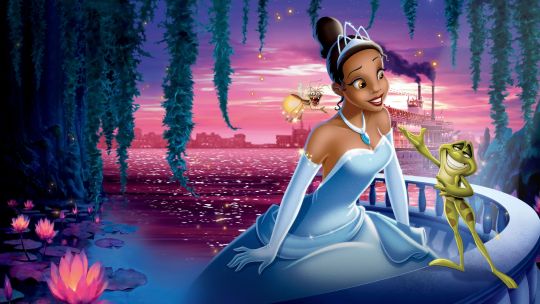
Given that I've remade several Revival-Era films by now, it was only a matter of time that I remade the film that started it all (unless you're one of those fans who considers "Bolt" the start of the Revival Era). I wasn't the biggest fan of this film for musical and story reasons, so I hope you aren't too offended by my changes.
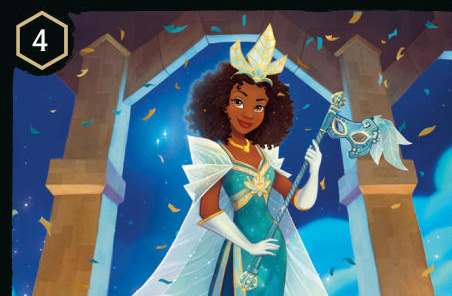
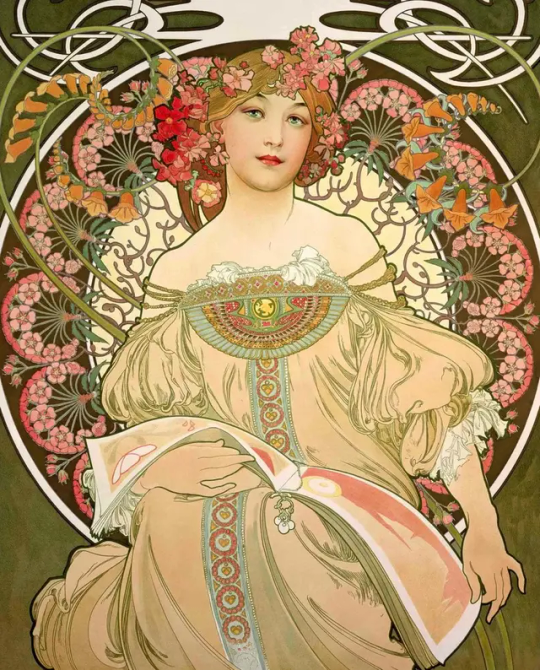
The film features more fantasy elements--I recall controversy about how voodoo was portrayed as magic rather than a religion, and to alleviate that, I think we should confirm that it's magic we're dealing with rather than a specific counterpart to a real-world concept. I'd definitely take inspiration from Alphonse Mucha imagery for the visual (though the art I imagined was inspired by his late 19th century work more than his early 20th century work). I do like the idea that magic is regarded as mystical and dangerous, explaining why Tiana steers away from it while Naveen is enamored by it.

2. Naveen's background and culture is more clearly defined--It was CONFIRMED when the film was released that Naveen's race is fictional since Maldonia is a fictional place, however many fans view him as being Indian. I noted in another post that they could've easily made him the prince of an Indian-inspired country (or a fictional Indian state) and educated in Europe, explaining the westernized fashion and interests--even though westernization was common in general around that time. Of course, if we go the "fictional location" route with the setting for the film rather than New Orleans, this isn't as much of an issue--but it'd still be a nice touch if it was an explicitly Indian-inspired fantastical kingdom, perhaps taking inspiration from Indian fantasy films.
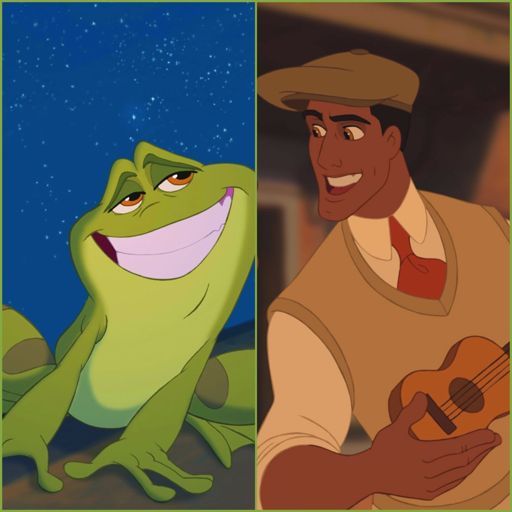
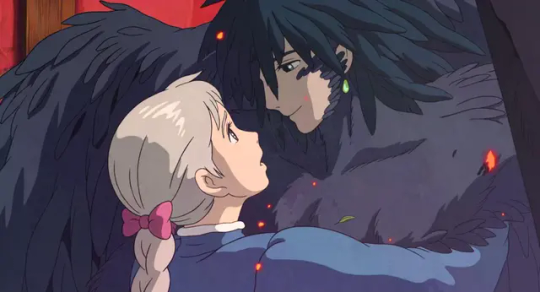
3. Play the duality plotline--Naveen is cursed to be a frog during the night, and a human during the day, albeit forgetful of this. A big criticism people had was that the two leads of color were frogs for most of the film. What if this wasn't the case? Naveen appears to Tiana both as a vain frog and a hedonistic young man. Due to Dr. Facilier's curse, Naveen is unable to remember his froggy curse by day, and thus cannot go about solving it, and the night is filled with shadow monsters who hope to stop him from breaking the spell, with Lawrence and Dr. Facilier manipulating him during the day to make him marry Charlotte. Tiana takes pity on his frog form (not knowing that he's the prince), and unlocks his kindness and selflessness, and as time goes on, human Naveen becomes kinder, and finds himself thinking about Tiana until they share a kiss at Mardi Gras, where he marries her instead of marrying Lottie, like the villains planned. When Facilier tries to get revenge on Naveen, Tiana battles him and breaks his talisman in a similar fashion to the original. (I feel like there's some inspiration you can take from "Howl's Moving Castle" with the plot.) Also when the kiss on Naveen fails to work the first time, Tiana gains the power to speak to animals.

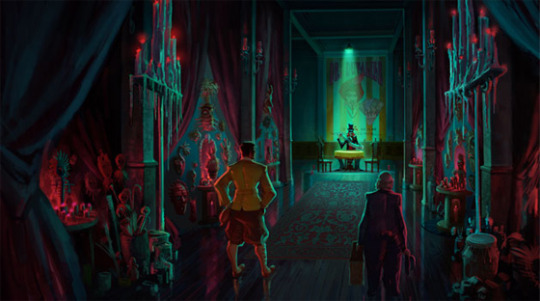
4. Give Lawrence and Dr. Facilier more backstory--It's mentioned that Lawrence has been taken advantage of all his life, and it'd be more powerful to see his villain arc if we knew how much pain he went through rather than simply seeing him as greedy and selfish from the start. Plus Facilier's magic is QUITE interesting, and something I'd love to know more about. Perhaps tying into the racial subplot, he had a life similar to Tiana and her family, only he couldn't achieve his dream and turned to the shadows. Some may consider this a sympathetic villain story, but I do think that Facilier's backstory in the original would've included some racial themes as well.

5. Make Ralphie older and give him more relevance--I do like the idea that Ralphie is close in age to Naveen (with Ralphie still being the younger brother), and they have a relationship similar to Dreamworks characters, ie Moses/Ramses, Sinbad/Proteus, and Miguel/Tulio. I also like the idea that while Naveen is selfish but somewhat innocent of the world, Ralphie is selfless but easily stressed and flustered. I picture him being a mix of Aladdin and Hercules. I love the idea that he came to keep tabs on Naveen, and both he and Naveen pursue Charlotte, though Ralphie actually develops feelings for her, and she reciprocates. Plus I do wish he had a different name, but that's just me.
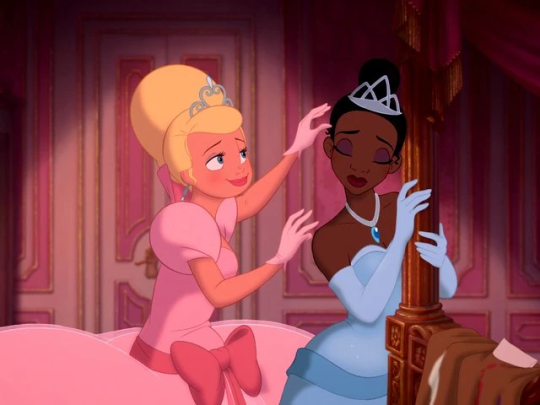
6. Charlotte's friendship with Tiana is a bit more pronounced--Some people think that her selfless act for Tiana at the end of the movie was too little, too late, as they found her annoying and spoiled. I'd enjoy more moments where we get to see their friendship, ie after Lottie gives Tiana a makeover, she asks her what happened at the party (which Tiana apparently never told her about since Lottie mentions how they're both getting their wishes granted that night).
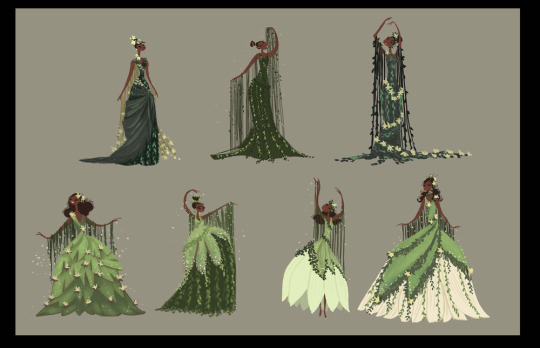
7. Embrace the green--I do want Tiana to enjoy wearing green without it being associated with her being a frog. The concept art has really great designs, and it could correlate to her growing to love Naveen--plus it'd make her a good contrast to Lottie, especially if it was Eudora making these dresses.
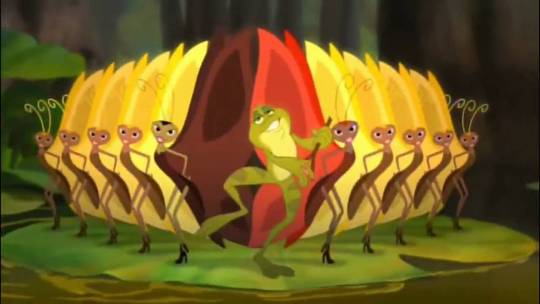
8. Alter the soundtrack and side characters slightly--Take "Never Knew I Needed" and make it an actual song for Tiana to sing! I'd also take Luis and make him a human (his story did feel like a racial allegory) while Ray would stay a firefly for his "Evangeline" story. Plus this could also make "When We're Human" a solo for Naveen. And maaaaybe make the "Down in New Orleans" a song for Tiana or an ensemble number. And a part of me wants Lottie to have a song (maybe with Ralphie).
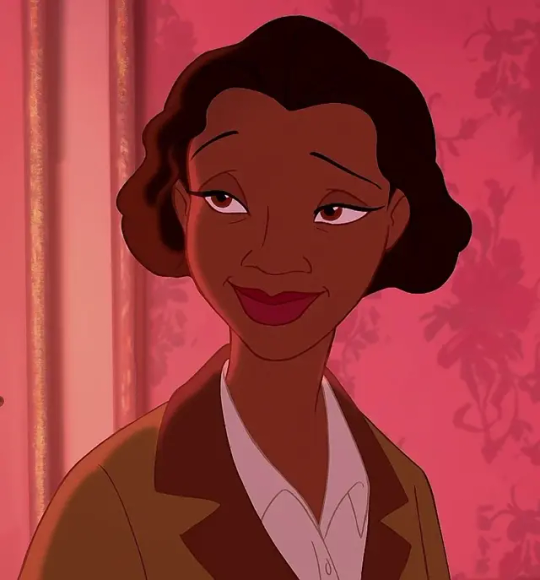
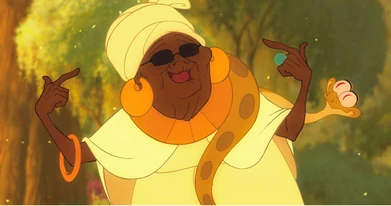
9. Remove Mama Odie and give Eudora more credit--I say this since Mama Odie didn't really do much to move the plot along (her advice of kissing a princess didn't really matter since Naveen and Tiana get married anyway), and she gave Tiana a good amount of insight that she wasn't able to appreciate until later. Allowing her mother to be a bigger part of her story is BIG for a Disney princess, especially if Tiana is staying human and staying in town.
Lemme know what you think! I hope you enjoyed this reimagining.
#tiana#naveen#disney princess#the princess and the frog#disney#disney animation#disney revival era#disney prince
63 notes
·
View notes
Text
Fant4stic: A Fantastic Failure (Part 1)
As I’m sure many of you are aware, this past Valentines Day, Marvel Studios released a poster promoting their upcoming Fantastic Four film, releasing about a year from now in July of 2025.
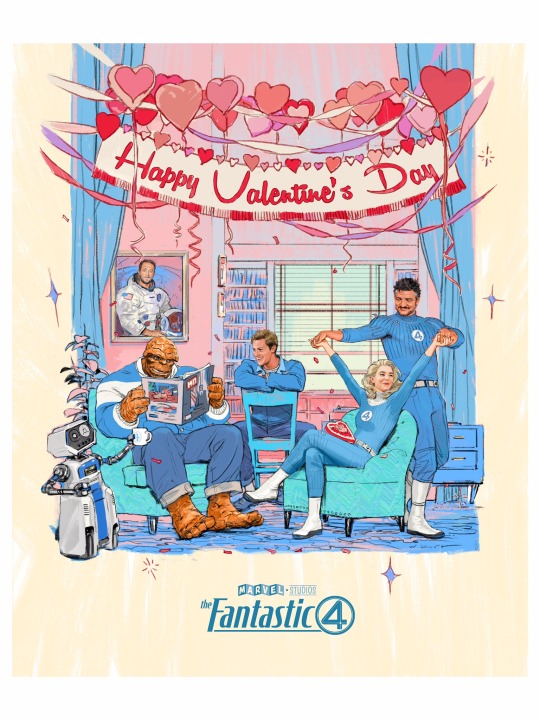
This has gotten people cautiously interested.....
Keyword: cautiously.
It's no surprise that the Marvel Cinematic Universe has been on a major decline since Avengers: Endgame.
Largely due to ridiculous quantity of projects they've been pumping out a year.
Plus that fact that a lot of these projects quality-wise have been either mid or just straight up dog-shit.
This has led to the ongoing trend known as Marvel Fatigue.
Not helping any of this is some of the behind-the-scenes stuff that was revealed over the last few years.
From having their projects being helm by people who have little to no knowledge or care for the characters and the source material they're working it.
And we all know how well that turns out....

To more infamously, overworking and underpaying their VFX artists.
And given some of the shit they've had to animate, they NEED to start getting better pay....
youtube
Yes.....what you just saw was a real scene from a Marvel movie.
And just to add salt to the wound, in addition to the declining interest, is that these recent Marvel films have not been performing well financially.
Hell, The Marvels (their latest film) ended up being a box office bomb, only grossing $206 million worldwide against production budget of $274.8 million. Not only that, but it now holds the record for being the lowest grossing film in the franchise's history.
So yeah.....
Although the casting is pretty decent, the inclusion of H.E.R.B.I.E. was quite the surprise, and the 60s aesthetic/vibes are pretty cool, people still have their reservations for this film given the MCU's track record lately.
However, one thing everyone does seem to agree on is that this film can't be any worse than their last cinematic outing.....
The Fantastic Four have had, funnily enough, have had four feature-length adaptations.
The very first film adaptation of Marvel's First Family was the legendary 1994 film from Roger Corman.

Although it was completed and ready to release, it famously never got released (which I'll touch a little more on later).
However, copies of the film have been circulating since May 31st, 1994.
Over a decade later, the Fantastic Four would get their technically second but first true feature-length film in the form of the 2005 film, directed by Tim Story, and released by 20th Century Fox on July 8th, 2005.
This film would also get a sequel just two years later with Rise of the Silver Surfer, directed again by Story and released by Fox on June 15th, 2007.
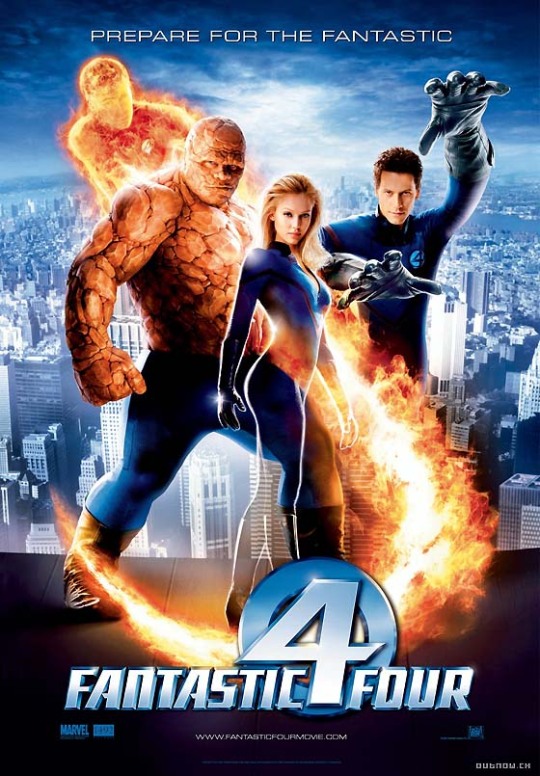

And finally, after almost a decade away from the big screen, the FF would return with their fourth and until the MCU film releases, latest film, the 2015 film, or more commonly known as Fant4stic, as that's how it was abbreviated...
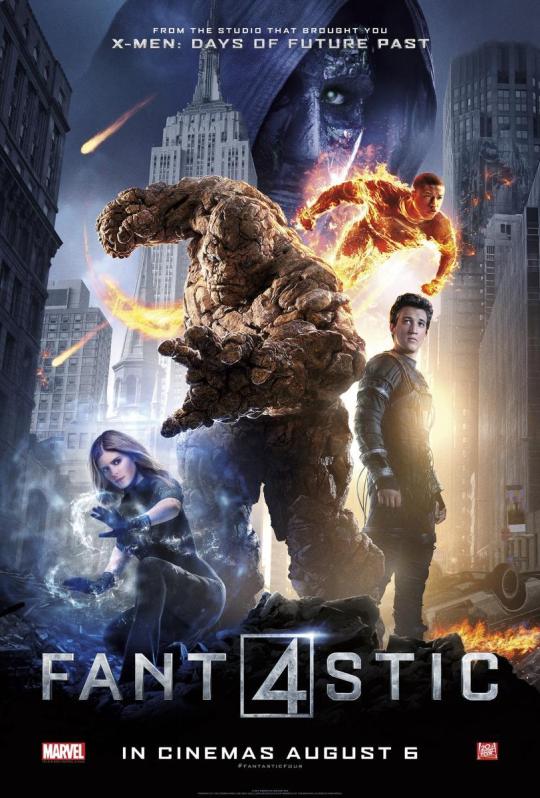
A Fantastic Nightmare:
In August 2009, Fox would announce that they would be rebooting the Fantastic Four film franchise.
The reason why is because although Rise of the Silver Surfer did fairly well, grossing $301 million worldwide against a $120-130 million budget, the total gross was notably lesser than the first movie, which grossed $333.5 million worldwide.
And although there were plans for a third movie and a spin-off film focusing on The Silver Surfer, Fox feared those films could possibly be money sinks and opted to reboot the film franchise as a whole.
For the next three years, not a whole lot of progress was done with the planned reboot, apart from the hiring of producers and writers and the consideration of actors.
But the production of the film really started rolling in July 2012 when Fox hired Josh Trank, who was fresh off his directorial debut, Chronicle, to direct film.
And accompanying him was Jeremy Slater, who was hired to the screenwriter for the film, alongside X-Men: First Class writers Zack Stentz and Ashley Edward Miller.
And this where everything went to shit....
If any of you even know about Fant4stic, you'd probably know that it has one of the most turbulent production histories in the last decade of filmmaking.
Before we start actually looking into the production itself, first we need to look at the reason why it was even made in the first place.
And this point brings me back to the 1994 film.
Both that and this film were created for the exact same reason: copyright hoarding.
In 1983, the other producer of the 1994 film, Bernd Eichinger met with Fantastic Four co-creator and the Marvel legend himself, Stan Lee, in Los Angeles to explore obtaining an option for a movie based on Marvel's First Family. The option was not available until three years later, when Eichinger's production company Constantin Film obtained it for a price the producer called "not enormous" and which has been estimated to be $250,000.
Eichinger's initial plan was to have the movie be a full-on blockbuster directed by Chris Columbus, complete with a cast full of big name celebrities.
But despite some interest from Warner Bros. Pictures and Columbia Pictures, budget concerns precluded any production, and with the option scheduled to expire on December 31, 1992, Constantin asked Marvel for an extension. With none forthcoming, Eichinger planned to retain his option by producing a low-budget Fantastic Four film. In September 1992, he teamed with B-movie specialist Roger Corman, who agreed to produce the film on a $1 million budget, to be released by his distribution company New Horizons Pictures.
But we all know how that ended....
Essentially, the entire of that movie ended up in a one big legal loop-hole that only benefitted Eichinger, leaving dozen of people's lives played with and their hopes and dreams crushed.
And in the case of Fant4stic, it's essentially a tragic case of history repeating itself.
Fox only produced Fant4stic not because they were genuinely interested in doing another film based on The First Family, they only did it to use it as an excuse to latch onto the film rights.
As when the 2010s rolled out, Fox's time with the Fantastic Four were about to come to an end as eventually, their film rights would've been reverted back to Marvel, and to that extension, The Walt Disney Company.
But if they had made another Fantastic Four project pretty soon, they would be able to extend their time with the film rights.
And from what I've heard, it seems like Fox wanted to get this film rolling as quick possible with the approaching deadline to the rights.
That's probably the reason why they hired Trank out of all people that could've directed this film.
Which for a film like this, you would think that Fox would go with a director that's a bit more experienced since remember: upon his hiring as director for the project, Trank was fresh off his very first directorial film.
Though you're probably wondering what I meant when I said everything went to shit upon Trank's hiring, well....
There have been plenty of cases where the productions of films have been absolute chores for one of two reasons.
The director or producers just being infamously difficult to work with, like David O'Russel or Michael Bay.
The studio constantly meddling in the production, like....basically every film studio to ever exist.
But Fant4stic is one of the rare cases where both the studio and the director made the production a living hell.
Starting off with Fox (as funnily enough, they did the least amount of damage to the production), they were guilty of....
Forcing constant rewrites
Giving Trank a much-lower budget than initially promised
Hiring a prominent special effect expert for the film, then firing him and not telling Trank about it
When production finally wrapped on the film, they were so unhappy with the finished product, that they ordered massive reshoots, including the film climax
Upon finishing the reshoots, they locked Trank out of the editing room and finishing the theatrical cut of film without him
As for Trank.....Hoo boy! Where do I even begin?
He was guilty for......
Constantly butting heads with the studio executives
Treating the cast and crew like absolute shit
Not showing up to the set on time
Usually showing up completely hammered
Frequently hiding himself from everyone on set
Constantly getting into fights (verbal and even physical) with the cast and crew
Letting his dogs loose and causing $100,000 worth of damage on the set
Constantly fighting with the screenwriters about what the tone of the film should be like
And writing a now infamous tweet on Twitter just the day before the film's release, only to be instantly deleted the next day
youtube
And remember, this was the second film that Trank directed....
I've heard of Hollywood getting to people, but it usually takes a couple of years. But in the case of Trank, it practically happened overnight.
And funnily enough, a lot of this behind-the-scenes drama was revealed to the public even before the movie had an official trailer.
So expectations for this film were not particularly very high....
But now that we got that out of the way, let's talk about the actual movie itself.
The "Story":
Childhood friends Reed Richards and Ben Grimm have worked together on a prototype teleporter since youth, eventually attracting the attention of Professor Franklin Storm, director of the Baxter Foundation, a government-sponsored research institute for young prodigies. Reed is recruited to join them and aid Storm's children, scientist Sue Storm and engineer Johnny Storm, into completing a "Quantum Gate" designed by Storm's protégé Victor Von Doom.
The experiment is successful, and the facility's supervisor, Dr. Allen, plans to send a group from NASA to venture into a parallel dimension known as "Planet Zero". Disappointed at being denied the chance to join the expedition, Reed, Johnny and Victor along with Ben use the Quantum Gate to embark on an unsanctioned voyage to Planet Zero, which they learn is a world filled with otherworldly substances. Victor attempts to touch the green lava-like substance, causing the ground they are standing on to erupt. Reed, Johnny and Ben return to their shuttle just as Sue brings them back to Earth and Victor is seemingly killed after he falls into the collapsing landscape. The Quantum Gate explodes, altering Reed, Sue, Johnny and Ben on a genetic level and granting them superhuman abilities beyond their control: Reed can stretch like rubber, Sue can become invisible and generate force fields, Johnny can engulf his entire body in fire and fly, and Ben acquires a rock-like hide which gives him superhuman strength and durability. They are then placed in government custody to be studied and have their abilities tested. Blaming himself for the accident, Reed escapes from the facility and tries to find a cure for their changes.
One year later in 2015, Reed is now a fugitive and has built a suit that helps him control his ability. Hiding in Central America, he is eventually found by the United States military with Sue's help and captured by Ben, who has become a military asset along with Johnny and Sue. Johnny and Sue have been outfitted with specialized suits designed to help them control their abilities. Reed is brought to Area 57, where Dr. Allen conscripts him into rebuilding the Quantum Gate in exchange for giving Reed the resources to find a cure. Arriving in Planet Zero, Dr. Allen's explorers find Victor, who has been fused to his spacesuit and now possesses telekinetic abilities, and bring him back to Earth. Believing that Earth needs to be destroyed to protect his new home world from future invasions, Victor kills the scientists and soldiers in the base, including Dr. Allen and Professor Storm, and returns to Planet Zero using the Quantum Gate, with Ben, Johnny, Reed and Sue in pursuit.
Now dubbing himself "Doom", Victor activates a portal on Planet Zero using the Quantum Gate and begins consuming the landscape of the Earth using a structure he created from the rock formations in Planet Zero. He is confronted by the four and, after a short battle, Ben punches Doom into the portal's energy beam, disintegrating him while Johnny closes the portal. Returning to Earth, the group is rewarded by the US military for their heroics by being given a new base of operations known as "Central City" to study their abilities without government interference. They decide to use their powers to help people and adopt the mantle of the "Fantastic Four".
youtube
Yeah, I basically just copied and pasted the premise of this film from Wikipedia.
The reason why is because there really isn't a whole lot to talk about.
The plot is paper thin, and the execution doesn't do it any favors.
In terms of adaptation, this film doesn't really adapt any notable Fantastic Four storylines.
The closest thing to this is that it's a loose adaptation of the first volume/arc of Ultimate Fantastic Four.
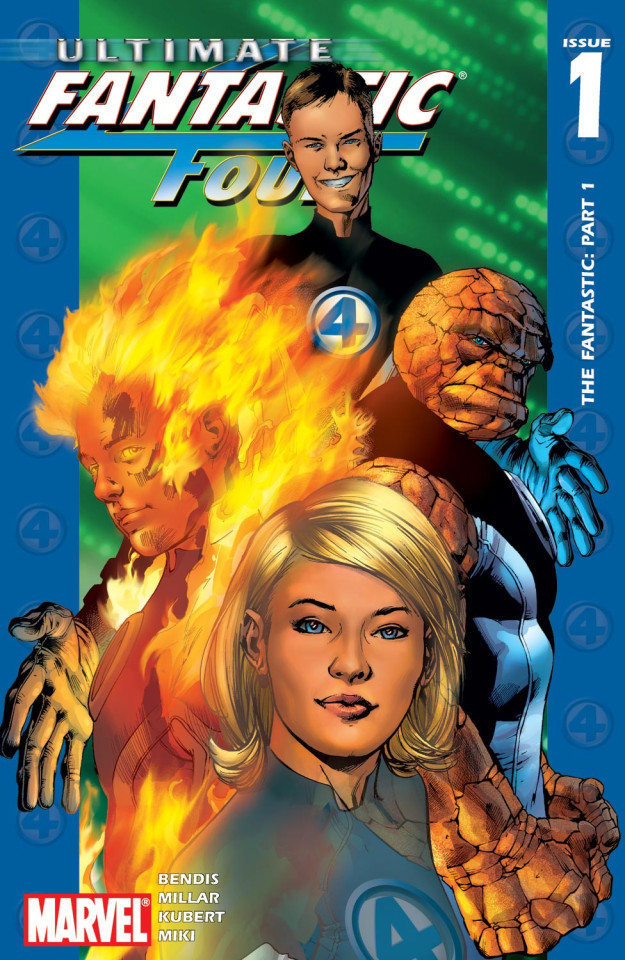
You can see this with elements such as.....
The Four themselves being depicted as teenagers/young adults
Reed and Ben being childhood best friends
Franklin Storm actually being a major character whereas in the 616 universe, he's largely irrelevant
The Baxter Building being turned into The Baxter Foundation
The reason for them getting their powers being a teleportation experiment gone wrong
And Doom being involved with the experiment as well and his famous armor being his actual skin instead
However, that's as far as it goes. They don't really bother to adapt the actual story of that arc, which has the team facing off against The Mole Man.
But one of the strangest story choices with this movie is in the case of Planet Zero.
Planet Zero is reportedly suppose to be Fant4stic's version of The Negative Zone.
Why they didn't just call it The Negative Zone, I have no clue.....
But as most of you know, The Negative Zone is famous for being the realm of one of the Fantastic Four's most prominent foes: Annihilus.
And with their version of The Negative Zone, you would think they would probably feature Annihilus in this movie.
But no! He doesn't appear at all nor is he even alluded to. In fact, Planet Zero is depicted as being a lifeless wasteland, with no living organisms in sight.
The Sucky Tone:
In contrast to the previous 3 FF films, this one is far more darker, serious and grounded.
This was because Trank wanted the tone of the movie to be, in his own words, "gritty, serious and as realistic as possible".
And it's safe to that Fox also encouraged this tone as well.
From the early 2000s into the mid-2010s, a good chunk of superhero films relied on taking superheroes and making them darker, gritty and more grounded than they were in their source material and other adaptations.
This can be largely attributed to the X-Men films, which were more serious and grounded than the comics and their other adaptations.
This was done because after the failure of Batman and Robin, comic books movies were briefly seen as cinema poison.
The X-Men films, Daredevil, Elektra, The Dark Knight trilogy, The Amazing Spider-Man duology, and even the first few films of the DC Extended Universe all prided themselves on being more dark, gritter and grounded than their source material and sometimes even predecessors in film.
And while most of these movies are still fondly remembered, I'm gonna have to come out and say this....
I'm not a fan of these films.
Apart from some of these characters just not fitting with a darker and gritty tone, the biggest reason why I don't like these films is because a lot of them reek of this sense of embarrassment and contempt for the source material they're adapting.
Like, some of them are not even being that subtle about it.
youtube
I am so glad this was finally made fun of in an actual Marvel project.
youtube
And in an age where a lot of producers and directors working on a projects based on long, established properties have been open about either not caring or straight up disliking the properties they're working with, its made many of these films age kinda poorly.
However, there were some superheroes films from the 2000s that didn't fall into this trap.
Undoubtedly the biggest is in the case of the Sam Raimi Spider-Man trilogy.
Those films were unabashedly campy, and were obviously made by people who legitimately cared about, understood and loved Spider-Man.
That's why despite of a having a few faults, the films are still talked about in high regards, even after two decades.
And notably more so than the films I just mentioned.
But back to the film itself, to the Fantastic Four having a dark, gritty and grounded tone.
Most people, myself include, would have to say....
youtube
Fantastic Four, while having their dark and serious moments here and there, are some of the most light-hearted characters in Marvel.
Trying to make them dark and gritty just feels incredibly tryhard.
And as for being grounded and realistic.
That's completely antithetical to the Fantastic Four.
They're adventurers and explorers. And many of their adventures have taken place in space, other dimensions, and alternate realties. It's one of the core appeals of the team.
And as you would expect, this tone did not do the film any favors.
Fant4stic is so. Fucking. Boring.
It is deathly serious with no sense of levity or humor to be detected.
The music is bland and generic, the color grading is dull as hell, and the performances....
Dear God....the performances.
I think this actually perfectly segways into the biggest and most important part of this post:
The "Characters":
One of the strongest draws of The Fantastic Four is, well, The Fantastic Four themselves.
All of them are very likable, charming, interesting and endearing in their own way.
And does Fant4stic capture anything that made these characters so great?
youtube
Let's start off with Reed first.
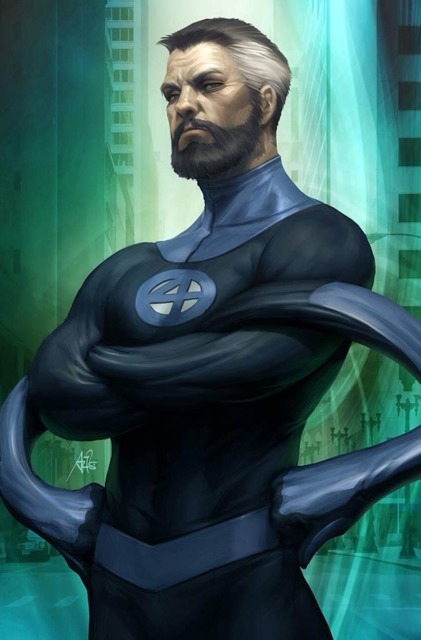
Reed in the comics and in just about every other medium is a genius, a polymath to exact.
In fact, he's tied with another one of the main characters I'll be talking about soon as being the smartest person in the Marvel Universe.
But besides being intelligent, Reed is also curious, adventurous, charismatic, level-headed, kind, and most importantly of all, passionate.
Reed is passionate about two things:
-His love for his family
-And his love for science and adventure
And while he can be little over-analytical, a little reserved at times, and have a bit of a one-mind track (so much so that he's been headcanon by just about everyone to be autistic), Reed overall is a very kind, caring and compassionate person.
Hell, he (along with the rest of the four) are some of the most morally righteous people in the Marvel Universe alongside Spider-Man and Captain America.
Now let's look at Fant4astic Reed....
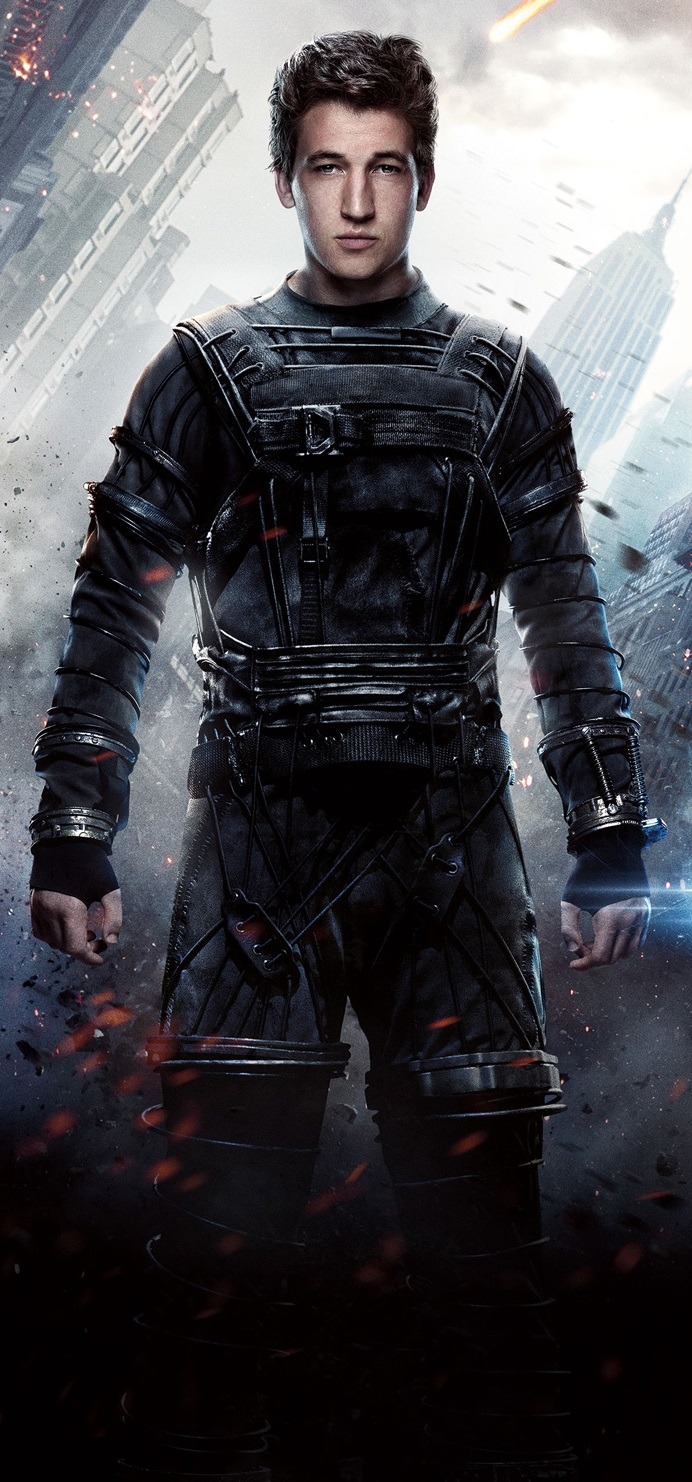
Apart from being intelligent, level-headed and maybe curious, has none of the traits I just listed.
He's not adventurous.
He's not shown to be all that kind.
He has all the charisma of a funeral service.
And worst of all, he's not very passionate.
In the comics, Reed loves science and is always down to learn something new.
But the way Reed approaches science in the movie, it feels more like an obligation rather than something he's actually passionate about.
Next we have Sue.
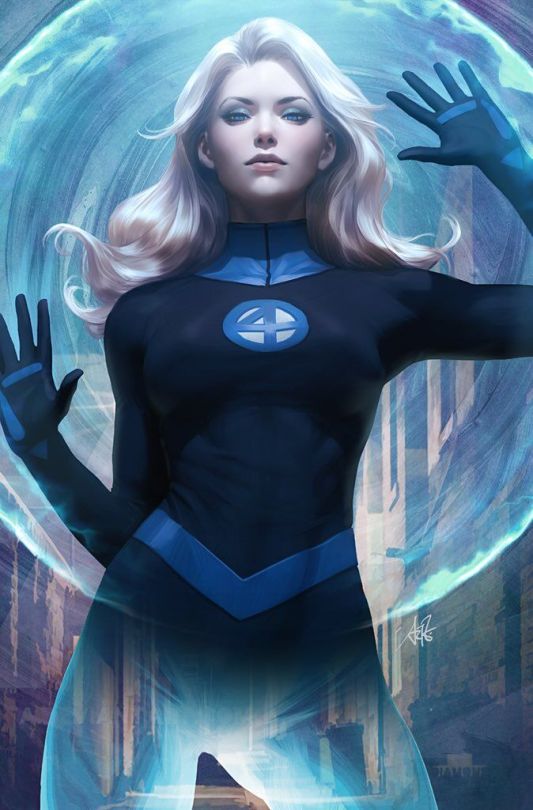
Sue is pretty much the mother figure of the four.
Warm, caring, kind, mindful and responsible.
But she's also incredibly terrifying.
Sue's the most powerful member of the four and has proven to be a force to be reckon with for anyone who cares to hurt her family, especially her children.
Now let's look at Fant4astic Sue....

Well, how do l put this in the kindest way possible?
youtube
Yeah. Apart from being introverted, she's also shown to be incredibly sarcastic.
Like, modern animated adult comedy levels of being sarcastic.
And needlessly so.
Apart from still being responsible, Sue shows none of the traits I just listed.
The only character see isn’t needlessly sarcastic to is her and Johnny’s father, Franklin.
This version of the character is the walking definition of a killjoy.
Next we have her brother Johnny.

Johnny is the little brother of the group, since he’s the youngest.
He’s cocky, brash, hotheaded, a bit of a prankster, and kind of a showoff.
But in spite of that, Johnny is also a very kind and loyal individual.
The dude has been show that he’s willing to die for those he deeply cares for.
Now let’s look at Fant4stic Johnny.

Johnny is really the only character who somewhat resembles his original comic counterpart.
But even then, it still feels somewhat subdued.
Plus he has the same issue as Sue with him being needlessly a dick to people.
Like, Johnny had his dickish moments, but wasn't a massive asshole.
And plus, I should probably address the elephant in the room.
As you could probably tell for yourselves, Johnny here is African-American, making him and Sue adopted siblings.
And this would be the very first (and so far only) iterations of the Storm siblings who weren't blood-related.
And in all honesty, I'm not a fan of it.
Having Johnny and Sue not being biologically-related just feels wrong.
That would be like having Mario and Luigi not being related.
Or Goofy and Max.
Or Dante and Vergil.
Sometimes, you can't alter an important familial relationship.
As for why Johnny was made black while Sue wasn't.
Well....
Apparently, the Storm Family were all gonna be black, including Sue. But the higher-ups were not really onboard with Sue being black (I'm not even gonna try to make sense of that). But they were allowed to make Johnny and Franklin black. So thus, Sue ended up being adopted by the Storms.
And I must ask....
Why?
Why did they want to make the entire Storm family black?
I'm guessing it was to give a new fresh take on the characters.
But that's kind of debatable when we get to a point I'll bring up a little later.
And in terms of casting a black Johnny Storm, I don't think Michael B. Jordan was the best choice.
He just doesn't look like how most people would see Johnny as being black.
I think there's two reasons for that.
The hairstyle. Johnny has usually been depicted as having spiky hair. I think if had Michael those upward locs, then I could see him passing for a black Johnny.
The age of the actor. In fact, this applies to all the actors of the four as well. In the film, the four are said to be teenagers, specifically fresh out of high school age. So basically they would be around 17-18 years old. It's hard to see any of them as being around that age range when the actors who played them were, at the time of the film's release, two of them were 28, one of them was 29, and one of them was 32! Did they really just not bother to look for actors who were like college-aged?
Now we come to Ben.
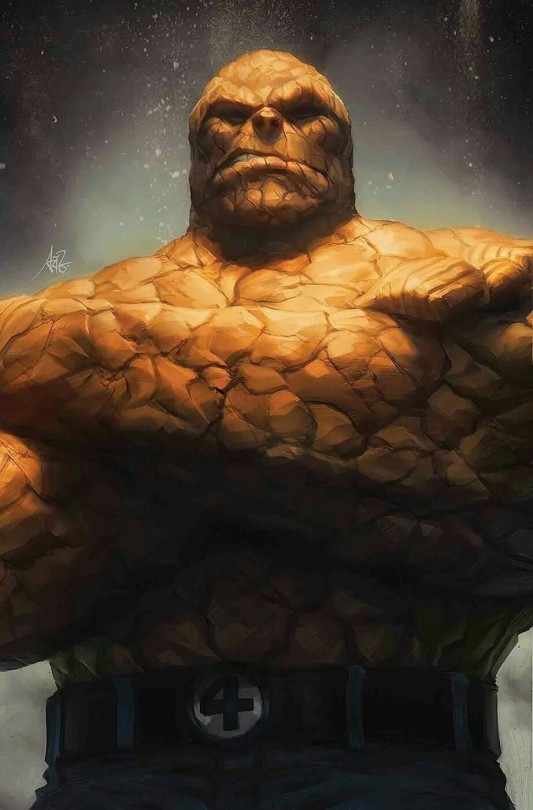
Ben is undoubtedly most people's favorite member of the Fantastic Four.
While gruff, tough and a tad pessimistic and grumpy due to his circumstances, underneath Ben's rocky exterior beats a heart of gold.
He deeply cares for his friends and family and will go out of his way to protect them no matter what.
Now let's look at Fant4astic Ben.

Ben, being only rivaled by the next character we'll be talking about, is the character who barely resembles his original counterpart the most.
First, there's his appearance. Specifically before he became The Thing.
Out of this already not-good cast, Jaime Bell was probably the most miscasted of them all.
For starters, he just doesn't look like Ben Grimm at all.
Like, take a look at this guy and tell me that he looks remotely like the pre-Thing Ben in the comics.


Basically, Jaime suffers from the same problem that Topher Grace had when he played Venom.
He's too short. Ben, even before becoming The Thing, was usually depicted as being pretty tall, 6'0 to be exact. Jaime is 5'7. The dude is literally no taller than me (and I'm 5'8).
He's way too skinny. Once again, even before becoming The Thing, Ben is usually shown to be a pretty muscular-looking guy. He is canonically a skilled brawler (due to him being part of a street gang during his youth) and played on the football team in high school.
Essentially, even before becoming The Thing, Ben looked like a guy who could and can beat your ass.
This Ben looks like the guy who YOU would be beating the ass of!
Then there's his characterization.
This Ben has none of the traits I just mentioned.
Apart from being kind, he's typically portrayed as being soft-spoken and somewhat meek.
Which just don't fit the character of Ben Grimm at all.
But I think the worst part of his characterization is that he doesn't even have a Brooklyn accent!
youtube
Yeah! He doesn't have a Brooklyn accent! Despite it being one of the most famous elements of his character.
I'm the guy who think that a character should have their accent intact if they originally had it.
I'm one of the few people who find it kinda annoying that Black Widow doesn't speak with a Russian accent anymore despite speaking with one all-time in her appearances pre-MCU.
And I'm sure that I'm the only guy on the planet who actually wants Magneto to speak with a German accent.
But Ben not speaking with a Brooklyn accent feels both disgraceful and just plain wrong.
But perhaps the worst thing about this version of Ben is with his trademark catchphrase: It's Clobberin' Time!
In this film, they decided to give the catchphrase an origin.
Because we all know that what's the fans were certainly asking for it....
But anyway, in the Fant4stic continuity, It's Clobberin' Time was what Ben's abusive older brother who regularly beat him, would say right before kicking his ass!
youtube
Why?
Why was this added?
Who thought this was a good idea?
It adds nothing to this already nothing story.
Having Ben's catchphrase being the result of abuse from his older brother comes off as both incredibly fucked-up and like the rest of this cursed movie, unnecessarily tryhard.
The people who thought that giving this iconic catchphrase a gritty reason for existing need to get repeatedly smacked in the face.
But like I mentioned before, there's only one other character in the movie that rivals Ben in being the biggest spit in the face to their original counterpart.
But I'm gonna save that for next time.
Yeah, I'm gonna have to end this post right here since I'm pretty close to reaching the media post limit.
So this is gonna be a two-parter.
Wasn't the original intent, but hey, you can't win them all.
But tune in next time where I finish looking at this terrible movie.
And beware....I'm not gonna be very kind.
#fantastic four#20th century fox#reed richards#susan storm#johnny storm#ben grimm#marvel cinematic universe#mcu#josh trank#fantastic four 2025#marvel#marvel comics#fox marvel
10 notes
·
View notes
Text
Your movie studio has acquired the rights to a popular standalone movie from the late 20th century. You need to make a new full length feature film so that the studio execs can cash in on that sweet sweet nostalgia bait.
Note that the execs don't care what the new movie is about as long as they can market it to fans of the original. They're giving you the first choice of what to do, but if you decline someone else at the studio will make a decision. Budget and actor availability aren't factors. You will have enough time to make the movie, but there is a set release date (no procrastinating forever).
15 notes
·
View notes
Text
MOVIE MUSICAL DIVAS TOURNAMENT
Clang clang clang went the trolley. Hello, and welcome to the Movie Musical Divas tournament. We've just come off a riveting bracket-style tournament dedicated to my beloved Broadway Divas from the 1980s to present day, and have graduated to movie musicals of the 20th century. Submissions for movie musical Divas are now closed, but additional propaganda for competing Divas is welcome.
Round 1 will begin July 1st, 2024 at 5:30 p.m. EST. This tournament will not be bracket-style to free up some of the rigidity of pairings I'd boxed myself into with the Broadway Divas. A sublime 100 Divas will compete for the crown of best movie musical actress.
A full roster (and propaganda checklist) can be found here.
Tags used: #moviemusicaldivas; #moviemusicaltournamentpolls; #mmround["X"]; #poll winners; #[actress names]. Suggest any tags you think will make this a more user-friendly experience.
Frequently Asked Questions:
"But what about [movie musical Diva who stared in one musical in the late 1990s as a 20-something]?" We're playing fast and loose with my guidelines and rules here, but I've made the executive decision to exclude movie musical divas who began late in the timeframe as very young women. We love and respect MILFs in this house.
"But what about [my favorite Diva who didn't make the list]?" All but one submission made it into the tournament unscathed. If she's not on our list, she wasn't submitted.
"That actress was only in [insert show here] so she shouldn't count." Because movie musicals are a niche genre, and many major movie musical stars only ever did one or two in their careers, I've been more lenient on some single-show credits as submissions have gone on.
"Please, please, please, can I submit [Diva] even though it's past deadline?" No, unfortunately the submission window has closed, and I'm rather partial to this neat and tidy hundred. That being said...if you submit her in the next two or three days, and I personally am deeply in love with her, I might allow it. Might.
"What happens if there's a tie?" Great question. We'll cross that bridge when we get to it.
Propaganda Rules, Guidelines, and Questions:
“I have additional propaganda for a Diva.” Excellent, I love to see it. Send me an ask, DM me, or reblog the poll and add your propaganda to it. If you see a separate post that relates to your Diva, tag @broadwaydivastournament and I will add it to the queue. I may not reblog your post if said Diva is already swimming in propaganda and her opponent is left high and dry, for the sake of fairness.
"Can I submit propaganda even if it's from a movie musical outside the timeframe?" No post-20th century propaganda will be allowed. For example: I will gleefully reblog anything Angela Lansbury from pre-2000s movie musicals, but will not reblog posts that focus on her post-2000s roles like the Balloon Lady in Mary Poppins Returns. Additionally, as much as it pains me as a self-proclaimed Broadway Baby, I will not be accepting stage performances UNLESS the musical in question has been filmed in full and released as a proshot. Concert performances or television appearances will also be rejected, unless by some fluke, the tv appearance is one of those feature-length special episodes. And even then, it'll be a case-by-case basis.
I am a hater at heart, and so I actually do post/reblog negative propaganda, but it cannot be gratuitous or overtly cruel. Propaganda of this nature should remain respectful, constructive, and reasonable. Acceptable examples include: thoughtful critique of a performance; whether the Diva was miscast in roles; why the Diva is less worthy of votes compared to her competitor based on the films and roles specifically. Personal assassination of a Diva's private life will not be allowed. The isn't the ethics and morality committee.
The views expressed in (most of) the propaganda are not my own. Nearly all submissions were done anonymously and will be credited as such. Any propaganda I personally submit will be done through my personal blog. If you've been here, you probably already know it. If you're new, I'm sure it will be very obvious soon enough. I will not be editing or condensing any propaganda submitted beyond a cursory spell-check, no matter how disdainful I personally am of this whole no capitalization business. I also do not have time to review all videos in full, so if you would like any videos appropriately tagged for sensitive topics, please let me know.
“Where are the hot movie musical men?” I welcome someone else to start up a hot movie musical man tournament, but it will not be me. I am a lesbian and thoroughly unqualified to oversee a tournament of men. Despite my extensive movie musical knowledge, I have no confidence that I'd be able to name more than five movie musical actors off the top of my head this very minute. (Robert Preston, Yul Bryner, Christopher Plummer- yeah, that's it. That's all I got without thinking about it too hard.)
“I think you forgot to add my propaganda?” It most likely has to do with broken links. Most Divas have a fairly reasonable amount of propaganda, and so I won't be excluding based on quantity, at least to start. That may change down the line as more comes in.
For any additional questions, please send me an ask or private DM.
17 notes
·
View notes
Text

Take with a grain of salt.
It's been over a year since DreamWorks rather unceremoniously rolled out a little movie called RUBY GILLMAN, TEENAGE KRAKEN. A movie that unusually was kept under wraps until... 3 1/2 months before release date. Official announcement from the studio, title, synopsis, trailer... All on the same March day, just months before its end of June release...
Now, the movie was briefly talked about unofficially by scooper sites in around 2021/22, and some DreamWorks employees had a MEET THE GILLMANS on their resumes, otherwise... Nada. Usually an animated movie is announced a year or so before its eventual release.
But, it being intended for streaming first and then hastily being bumped up to theatrical release (which has happened to movies from other companies, such as BARBARIAN and SMILE) could explain why DreamWorks just dumped this one. It did get decent reviews and could've been a small success in its own right, had it not been released in such a crowded summer...
It does feel kinda "streaming movie", though. A lowkey little effort, but I think it's cool that Universal and DreamWorks gave it a theatrical release if it was indeed intended to be some Peacock tuck-away. ORION AND THE DARK was a straight-to-Netflix affair, despite being co-written by Charlie Kauffman. I'm sure you'll see more of those every couple of years from DreamWorks. Something that's actually neat, and you wonder... "Why didn't that go to theaters?"
But it begs a question...
Around 2022, it was reported by the Fine Tooning podcast that DreamWorks' game plan going forward was "a sequel and a non-sequel" every calendar year. 2022 was BAD GUYS and LAST WISH, 2024 had KUNG FU PANDA 4 already and we have THE WILD ROBOT around the corner. DOG MAN and BAD GUYS 2 mark 2025, in addition to a TV series adaptation GABBY'S DOLLHOUSE. 2026 only houses SHREK 5 so far, it is unknown what the non-sequel opening that year is. (I've kinda given up on RONAN BOYLE happening. Maybe it's... I dunno... An original movie from LAST WISH/CROODS 2 director Joel Crawford?)
What would've accompanied TROLLS 3 in 2023 if RUBY GILLMAN remained a streaming title? Was THE WILD ROBOT at one point eyeing a spring/summer 2023 debut? 2023 would've been pretty quick for that movie, as director Chris Sanders presumably finished up his CALL OF THE WILD movie for 20th Century Studios in mid-2019. That was supposed to be a Christmas 2019 release, but after Disney completed their acquisition of 21st Century Fox film & TV assets in early 2019, CALL OF THE WILD moved to February 2020. Blue Sky's SPIES IN DISGUISE took its spot.
Could be!
If you remember... At one point, whatever that DreamWorks movie was going to be... RUBY GILLMAN, WILD ROBOT, something else... Would've opened in the fall of 2022... Well before that summer rush.
At one time, DreamWorks' slate had THE BAD GUYS opening in September 2021. That would've been followed by a spring 2022 release of PUSS IN BOOTS 2, and then fall 2022 would've housed an original/non-sequel. Which possibly puts a hole in the "test screening" claims. Maybe another picture was in the works, and then got cancelled.
If I remember correctly, COVID-19 altered that plan, with 2021 only being the year of BOSS BABY 2 and SPIRIT UNTAMED. BAD GUYS moved to April 2022, and booted PUSS IN BOOTS 2 to September 2022. This was when parent distributor Universal was planning to roll out the MARIO movie in Christmas 2022...
... Until they wanted the release of that movie to coincide with the Nintendo theme park opening, so... April 2023, boots the DreamWorks movie set for late March 2023 to June 2023... Which boots Illumination's MIGRATION to Christmas 2023. Dominoes.
And RUBY GILLMAN ended up being the June 2023 Universal animation release... And that was right after a Disney remake of a certain redhead mermaid movie... RUBY GILLMAN, which had been in some form of development since 2016 and probably entered full production by 2021, was kind of a victim of coincidence here. A benign cartoon plot about mermaids being the enemy of krakens (usually, we associate krakens with big scary monsters, while mermaids are often portrayed as non-threatening, simple subversion), used as some sort of anti-LITTLE MERMAID movie. A new weapon in a particular group of dingus' dumbass "culture war". And then you had a weird subset of LITTLE MERMAID remake fans who interpreted the movie - minus some weird rightwing crap - as some sort of jab at Halle Bailey's take on Ariel... The internet is full of embarrassment, isn't it? All that, over a silly movie that just so happened to open close to LITTLE MERMAID.
So yeah, RUBY GILLMAN initially being a streaming movie would definitely fill in the blanks regarding its very weird rollout last summer. DreamWorks/Universal have since announced other movies well before release.
8 notes
·
View notes
Text
"The Evolution of Movies: From Silent Films to Streaming Giants – A Journey Through Cinema History"
The Evolution of Movies: From Silent Films to Streaming Giants
Movies have been a cornerstone of global culture for over a century, captivating audiences with their ability to tell stories, evoke emotions, and transport viewers to different worlds. From the early days of silent films to the rise of streaming platforms, the film industry has undergone a remarkable evolution, reflecting changes in technology, society, and audience preferences.
The Birth of Cinema: Silent Films and the Golden Age
The history of movies begins in the late 19th century with the invention of motion picture cameras. The Lumière brothers are often credited with pioneering the art form, showcasing short films like Arrival of a Train at La Ciotat (1896), which astonished audiences with its realistic depiction of movement. Silent films dominated the early 20th century, with stars like Charlie Chaplin and Buster Keaton becoming household names through their physical comedy and expressive performances.
The 1920s and 1930s marked the Golden Age of Hollywood, as studios like MGM, Warner Bros., and Paramount Pictures churned out iconic films. The introduction of sound in The Jazz Singer (1927) revolutionized the industry, paving the way for musicals, talkies, and more complex storytelling. Classics like Gone with the Wind (1939) and The Wizard of Oz (1939) emerged during this era, setting the standard for cinematic excellence.
The Rise of Blockbusters and Special Effects
The 1970s and 1980s saw the rise of the blockbuster, with films like Jaws (1975) and Star Wars (1977) redefining the movie-going experience. Directors like Steven Spielberg and George Lucas embraced new technologies, such as advanced special effects and sound design, to create immersive worlds that captivated audiences. This era also saw the emergence of franchises, with sequels and spin-offs becoming a staple of the industry.
The 1990s and early 2000s brought further advancements in computer-generated imagery (CGI), enabling filmmakers to push the boundaries of visual storytelling. Films like Jurassic Park (1993), The Matrix (1999), and The Lord of the Rings trilogy (2001-2003) showcased the potential of CGI, blending it seamlessly with live-action footage to create breathtaking spectacles.
The Streaming Revolution
In recent years, the rise of streaming platforms like Netflix, Amazon Prime Video, and Disney+ has transformed how audiences consume movies. The convenience of on-demand viewing has challenged traditional theatrical releases, leading to debates about the future of cinema. Streaming services have also become major players in film production, producing critically acclaimed movies like Roma (2018) and The Irishman (2019).
The COVID-19 pandemic accelerated this shift, as theaters worldwide closed and studios turned to streaming to release their films. Blockbusters like Black Widow (2021) and Dune (2021) debuted simultaneously in theaters and on streaming platforms, signaling a potential new model for film distribution.
The Power of Storytelling
Despite the changes in technology and distribution, the heart of movies remains storytelling. Films have the unique ability to reflect societal issues, challenge norms, and inspire change. From the social commentary of Parasite (2019) to the representation of diverse voices in Black Panther (2018), movies continue to shape and reflect the world we live in.
As the industry evolves, one thing is certain: movies will remain a powerful medium for entertainment, education, and connection. Whether experienced in a crowded theater or on a smartphone screen, the magic of cinema endures, reminding us of the universal power of a great story.
From silent films to streaming giants, movies have come a long way, yet their essence remains the same: to entertain, inspire, and bring people together. As technology continues to advance, the future of film promises even more innovation and creativity, ensuring that the art of cinema will thrive for generations to come.
For more insights and updates on the world of movies, visit www.ipartv.com.
iptv_extreme_box_smarters_pro
Smart_iptv_android_aliexpress_pro
windows_iptv_player_2025_extreme
iptv_subscription_best_firestick
mag_box_iptv_ebay_mag_box_iptv
amazon_free_test_netflix_cobra_
channels_working_and_best_iptv_subscription_uk
3 notes
·
View notes
Text
Flaming Star Review

Because this is a film where the focus is on a mixed race family dealing with the consequences of White/Native American tensions this is a disclaimer that things said will not age well. Read with caution and if you have something to discuss or want to correct a point I made I'm willing to listen.
Based on the book, Flaming Lance, Flaming Star is a film made by 20th Century Fox that tried to be the first Elvis film released after his return from the army in competition with the Paramount film GI Blues. Elvis was cast as Pacer Burton after Marlon Brando and Frank Sinatra turned down the role of Pacer and Clint Burton respectively. Despite being filmed in August 1960, this movie was released in December of that same year. Barely 4 months later.
Seen as a story ahead of its time, this movie was once outright banned in Apartheid era South Africa. It also was perceived as a failure as it didn't make as much money as GI Blues which was released only a month prior even though critics surprisingly liked Elvis' efforts. The blame was put on the serious nature of the film and the lack of songs. Ironically there were more songs in the film, but because test audiences didn't like all of them, two of them were cut. Does Flaming Star really showcase the complexities of White/Native American race relations or is it so unbelievably insulting that the people in Elvis' circle were right to ignore it? Let's find out.

"Flaming Star" is quite appropriate for a serious western. A song like this wouldn't be out of place at all if this was a western not involving Elvis Presley. It also introduces us to the concept of the Flaming Star which indicates when someone's about to die. This does not exist in Kiowa culture. They do have specific beliefs regarding death but that isn't one of them. Right off the bat we get the idea that this is going to be a movie about how Native Americans are "exotic".
We immediately get a birthday party and "A Cane And A High Starched Collar" has audio that's so poorly edited. You can literally hear a weird echo effect on Elvis' vocals and it was admittedly distracting. That being said, the song is appropriate for the setting. In the mid-late 1800s, live music was the only entertainment available since radios and tv didn't exist. It also shows that Pacer might be stoic, but he isn't a recluse. He wants to have fun with his family just like everyone else.

Despite this being a mixed family, the white people are seemingly pleasant. That is until we get the micro-aggression that Mrs. Burton's cooking could practically pass for their white mother's. This photo summarizes my feelings about this as a whole. Everyone is looking at this man as if to say "you did not seriously just say that" meaning they all know how backhanded that compliment really is. Probably the only time Clint's fiancee is on their side as even she looks shocked that someone would say that. We also get an awkward moment of Clint getting a gift from his fiancee. It would make more sense for the white townsfolk and Clint's white fiancee to be confused if this was a gift from Mrs. Burton and it was something that was from her culture. It would at least connect with the micro-aggression because it would showcase that they still don't understand her fully.
After the party is over, Pacer and Clint ride with Clint's friends back home in what's supposedly the middle of the night as a showcase of the day as night filming technique. The family gets attacked by a band of Kiowa in the most severe case of emotional whiplash I've seen in an Elvis movie. One guy even gets a flaming arrow in the stomach. Outside of the general fact that Native Americans were driven from their land the movie wants to be as vague as possible regarding the history of White/Native American race relations so I don't no idea why they specifically chose now to do this. As for the victims of this attack you have to wonder why were they specifically chosen to die? From a logistics stand point they were further into town than Pacer's family. Unless there's a specific reason behind it, the only explanation we're going to get is that to the Kiowa "all white people are bad and need to die". This is of course a terrible reason from both a racial standpoint and a narrative stand point.

Mrs. Burton and Pacer are meant to have Kiowa ancestry so naturally you wonder what the town's dynamics are if even in peace time you have some of Clint's friends engage in micro-aggressions. A small town like this can be wary of outsiders. But Mrs Burton and Pacer aren't outsiders. Pacer was raised in this town so there shouldn't be any issue with Mrs. Burton regarding cultural differences. This is shown by having the Kiowa chief visit the house and showing Pacer be the go between by having him be the one to make a pact with the chief to meet at a later time. He doesn't really acknowledge Mrs. Burton because he knows that she left. Which makes it all the more confusing when Clint and Pacer go to the general store.
Everyone immediately turns on Pacer after this attack. Not even Clint's fiancee sticks up for him. If anything she practically yells in his face like Pacer personally killed the Howard family despite the fact that Pacer had absolutely nothing to do with it. This just shows that Pacer was never accepted if after one unprovoked attack his whole family gets shunned. Mrs. Burton even helped the Howard family from dying of fever showing she has no ill will towards white people. Clint's fiancee being part of this especially makes no sense since she should know better than anyone that Pacer would never do anything like this. Even when Clint wants to stick up for Pacer, she completely ignores him and goes right back to chewing Pacer out. She even wanted her husband to be to get out as if he's a trouble maker too. Just because their house wasn't attacked doesn't mean they knew. What was stopping the Kiowa from killing everyone in that town? Surely other families lived in that area. Her logic that they were specifically spared makes zero sense.

Some of the white people in the village arrive at the house. They want to know if Clint's going to be part of their fight against the Native Americans. As opposed to finding justice specifically for the murder, they act like they want to make every single Kiowa pay because to them every Kiowa member likes to kill people. Clint being a rational figure says no because such an extreme act is horrible and you have to wonder why this town is operating on collectivism as opposed to having at least a sheriff or mayor. Given the setting, this town wouldn't have this level of lawlessness. If you know anything about Native American history, you would know that you can fill an Excel spread sheet with how many wars the federal government had with Native American tribes. Texas alone was such a big battle ground that I'm genuinely confused on how this can happen without even mentioning the military or having people stationed there take charge of the situation.
They accuse Clint of not wanting to upset his "Kiowa" mother and naturally he shoots one of them. Even when Mrs. Burton offers to help, they practically spit on her offer. The white men took it so far as to kill Mr. Burton's cattle. After all this is an "us vs. them" situation where if Clint isn't with the white folk he's against them. Because apparently everything has to be black and white with absolutely no room for gray area. What boggles the mind is how exactly they plan on doing this? Do they genuinely intend on sending a handful of men to a full tribe when they have no idea who did the crime in the first place or even know how many people live in that tribe? There are just so many flaws in their plan just based on those two concerns that you can see why Clint is totally in the right for not wanting to join in just based on logic alone.

Pacer is put in charge of protecting the house while Clint and his father are gone. Some white trappers arrive at the house and immediately start making insults despite the fact that Mrs. Burton graciously offered food out of her own pot for them to eat as opposed to turn them away. This whole sequence makes no sense since if they genuinely didn't want a Kiowa helping them, they can just leave. They knowingly went into the house, saw she was Kiowa, and stayed just to boss her around.
When she eventually kicks them out, they still have the nerve to insult Pacer. To them it was her fault as opposed to their bad attitudes that they got kicked out. Pacer rightfully fights them and we get a sweet moment where he tries to hide his injury from his mother. Pacer wants to be a strong man, but Mrs. Burton sees right through it. She doesn't nag him. She doesn't give a cliched line about mother's intuition. She just knows because she knows Pacer is aware of the situation. This was a dangerous moment for both of them, and Pacer should be allowed to be a little vulnerable.

The next day the Kiowa come back and ask Pacer to join them. Even though Pacer himself is Kiowa, he's concerned about his safety. He's right to do this because after what happened to the fur trappers anyone would feel wary of people they don't know. However, what shows Pacer is different is that he's willing to let go of his suspicion. The chief also shows that he isn't a mustache twirling villain who can't be reasoned with by listening to the simple request Pacer makes of ordering his warriors away. Once he sees that, Pacer allows himself to let his guard down and have a civil conversation.
The chief talks about making a war against the white people for taking their land. His desire to get his people's land back is justifiable given the history, but his method of doing so is extreme. He wants to go beyond just getting land back. I understand this is meant to answer the why at the beginning, but it completely sanitizes how things got to this point. The chief having these extreme views goes against his actions as he allows Pacer and his mother to go to the tribe. There's no hidden motive as he outright says that he wants Pacer to join their cause. It wouldn't be in his best interest to be anything but transparent given the situation.

They arrive at the tribe's camp and we start to see how these people live. Pacer is stuck in the middle since he's half Kiowa and half white. His aunt is still part of the tribe which adds another layer. You see how the Kiowa are not exactly thriving so just by having basic empathy you can understand why the chief would at the very least want to be compensated for the hardships they faced. Additionally, you also see how Mrs. Burton isn't immediately shunned for leaving once she gets there. This indicates that while there's shared beliefs in this tribe, individual members are allowed to have their own opinion.
Pacer being treated like a member of the tribe despite being half blooded is a good example of how differences aren't always bad. If you come to a different group in peace, and they don't immediately see you as a threat, there's no reason to mistrust them. Even when the chief knows Pacer is conflicted, he doesn't immediately judge him. He tries to appeal to his Kiowa heritage so that he will go join them. He doesn't even kick them out when Pacer doesn't immediately agree to this. He's somehow more capable of seeing the gray area than everyone in that town which if anything makes you not want to sympathize with them.

On the way back, one of the Howards ends up being alive. I have no idea how he managed to survive the attack if he can't even stand and he's been left on his own devices for days, but we're not supposed to focus on that. What we're supposed to focus on is that Mrs. Burton had been shunned by her family. They no longer see her as one of them. As heartbreaking as it is, it's also heartwarming that despite these sentiments, this isn't a universal feeling amongst the tribe. Two Moons doesn't show any resentment towards her as he's willing to escort them home. This makes the Howard man not only shooting Two Moons, but shooting at Pacer and Mrs. Burton heartbreaking.
When they go into town to find the doctor everyone refuses to help them. They claim Clint's lying about one of the Howard's being alive because they do not want to help this family. It gets to the point where even when they entertain the idea that he was alive, his shooting was justified because he was delirious and confused. Even the doctor doesn't want to help because of peer pressure and it's just despicable behavior. A doctor should never withhold treatment from anyone let alone because they're afraid of being "othered". Pacer convinces the doctor to try to help them by pretending to hold his daughter hostage. His daughter sees Pacer as a friend yet everyone immediately thinks he's going to kill her like an animal because they no longer see Pacer as a human being but a horrible Kiowa savage. Even though Clint's fiancee does join them later on, to me it's too little too late as I just don't see how their relationship lasts after this.

Mr. Burton goes out to fetch some water as a dust storm appears. Mrs. Burton starts to see the Flaming Star so she gets out of bed and goes to die in a field. I get that we need emotional drama, but you can easily frame this as a feverish delusion. Mrs. Burton has been in this town for 20 years so having her slavishly obey this fictional belief feels weird. They bury her the next morning and to prove that Mrs. Burton did assimilate, her husband quoted a Bible verse. In this setting, knowing your Bible is very important and she took the time to learn it. Naturally Pacer is angry and wants to hurt the doctor. Even though the doctor claims nothing could've been done, Pacer has a point to say that he still could've tried. It's only because of Clint that he survived.
What I wish would have happened is that instead of Clint letting him go, he held onto Pacer. Clint letting Pacer go isn't a matter of racism but toxic masculinity. Men back then couldn't be seen as vulnerable as they are the breadwinners so Clint genuinely didn't know because Pacer never told him. What hurts even more is that Pacer calls out his fiancee for making him feel like garbage and she tries to defend herself by saying that she never did that. But she's lying. We saw her earlier in the movie yell in his face about the attack and from what I've seen never apologized for being that way. This should've been her moment to realize how wrong everyone was and to personally apologize for what she's said to Pacer. You know her future brother in law who Clint cares for. Pacer even said himself that this was their first fight period which shows how Clint cares for him.

Pacer deciding to leave makes sense because at this point his mother was his morality chain. He clearly doesn't have any support from the townsfolk so the best way to keep himself safe is to stay with the Kiowa. Mr. Burton though gives us this heartbreaking moment where he realizes that his wishful thinking involving Pacer being mixed race lead to him feeling alone and he apologizes for that. He doesn't shame Pacer for "betraying the family" but actually supports Pacer. Seeing him hug his youngest son really gives you and Pacer that silver lining that not all white are bad. That even if his beliefs were misguided, he always wanted nothing but the best for his family. Which is why when Pacer returns, he makes a deal with the chief to not attack his old home. It showcases how Pacer loves his family. Even if his father and brother can never fully understand what it's like to be him, he still loves them enough to not want them to be hurt by this war. I love how the chief is willing to accept this because again he is someone that can be reasoned with and Pacer isn't asking for something that's impossible to give.
A group of Kiowa unaware of Pacer's deal with the chief start to attack Mr. Burton. He manages to kill some of them before dying by arrows. How anti-climatic since the last time we see him, he tells Clint that he married Mrs. Burton because he genuinely loved her. Knowing that Clint was only a baby makes this so important to know because this means that Mrs. Burton didn't have Pacer and then married. She specifically left the tribe to marry a man who already had an infant son. She loved Clint as her own which is why when Clint buries Mr. Burton next to his stepmother's grave he wants to get revenge. In this instance, you can genuinely say he's justified because he had no reason but to think the chief was behind it. He is seeing first hand that the Kiowa do not care about Mrs. Burton by killing her husband. He manages to kill some before he gets shot by arrows and rides away. Pacer knowing that this is still his brother saves Clint by taking him away from the action to safety.

Pacer shows his true loyalty by helping Clint. He does everything he can to stem the bleeding and paints his face with Clint's blood to make him look more "Kiowa" so he can lead the others away. He manages to kill some of the Kiowa so they wouldn't attack Clint and get him back home safely. Pacer's loyalty to his family winning out is a good thing to have as it shows that loyalty is earned. This is his world and if Clint can at least live, that's all that matters. He didn't even know Mr. Burton was killed so he genuinely helped Clint because Clint is his brother and despite the misunderstanding, he never shunned Pacer. It's even more sad that Mr. Burton died the way he did because Pacer didn't even know how it happened or even got to be with him. It makes his plot to spare them all for nothing as it still happened. Which is exactly why he's willing to sacrifice himself to save Clint. Clint is his only family now and he's loyal to his family to the end.
Clint wakes up in his fiancee's home and despite still being injured, wants to go out and find Pacer. He's unfortunately too late as Pacer returns to town. Sometime during the night, Pacer was attacked and injured. We don't know how this happened but can only assume it was during the attack against the Kiowa. Pacer claims he can see the Flaming Star and says goodbye to Clint before going off into the hills to die. Clint's fiancee once again doesn't seem to care about this and what hurts the most is that when Pacer comes to town they don't even say it's Pacer. They just call him a Kiowa that's badly injured. How is it that someone who has lived in that town his whole life can be completely dehumanized to the point where he isn't even named. It isn't as if Clint went out of his way to ride up to Pacer because he was that far away.

I absolutely hate how the movie just ends like this because there's no bittersweet moment where Pacer is even buried. Pacer's loyalty should at least be rewarded by having Clint follow him to at least show that Pacer belongs with his family. Even if it's to bury him, Clint would at least show that he would never leave Pacer to die alone. Clint's fiancee could have finally had her moment of redemption by chasing after Pacer. Clint realistically is too hurt to ride so she would act on his behalf. This would be a sign that she does care about Pacer and is willing to acknowledge that her soon to be husband cares for him. But she doesn't do that because the movie stops like the writers were specifically told they couldn't make this movie longer than 90 minutes and simply ran out of time to finish the story.
Once again, the idea that Pacer has to obey this Kiowa instinct to follow this Flaming Star completely takes away from Pacer's message of how he hopes one day people will understand Native Americans. All he wanted was to be treated like any other human being and the writers from 1960 couldn't even do that by showing him being buried with his parents. The fact that it just ends makes you feel like Patchy from Spongebob when he was so hyped about a lost episode only to feel outraged when the end result was a let down. There are just so many questions about what Pacer dying means in this world that will never be answered. Did Pacer actually kill every single Kiowa warrior by himself? Will this lead to a bigger war if he didn't kill them all? What will happen to all the non-warriors in that tribe if they did all die? Does Clint still marry his fiancee despite all the negative things she said to Pacer? I have no idea since the movie just stops and it sucks because in the end all you can say about it is "that's it"?

This movie genuinely fascinates me with how it markets their characters. On this poster alone we have character descriptions that are blatantly false once you watch the movie. Pacer himself can be seen as a lie because there was nothing to suggest that he wished to join the tribe his mother used to be a part of before the events of this movie. I'll make a separate post about how race is depicted in the grand scheme of things but why was the tragic mulatto trope used for this story as opposed to the "not like them" argument. Based on what we know about these characters, it would be a lot more realistic for the townsfolk to hate the Kiowa tribe but turn to Pacer and Mrs. Burton to say "don't worry we don't mean you. You're one of the good ones" since it's no secret that this family has been part of the town for Pacer's whole life. In the grand scheme of things it feels like the urge to get this out before GI Blues caused the adapters to cut corners in establishing the status quo of this town. Barbara Eden has such a high billing despite having a severe lack of positive influence on the film which makes you wonder what the intent truly was.
Despite my criticisms about the legitimate social issues this movie covers, I still give it a 9/10. Acting wise, this is one of Elvis' better movies and just because the topic was controversial doesn't mean that it was a mistake to have Elvis play this role. He perfectly conveys the sadness behind Pacer's stoicism which shows his growth as an actor. Even if you're scratching your head on how Mr. Burton couldn't have possibly predicted Pacer having issues, you can at least understand that it wasn't out of malice but out of wishful thinking that things will be better in the future. If you're someone that likes to analyze how race was depicted in movies throughout history this is the perfect film for you. Even if you are sensitive to racism regardless of how it's portrayed, I still think it's worth watching because Pacer's message about having hope that people will understand those who are different shouldn't be forgotten.
Tagging: @ssinnerplazahotel, @smokeymountainboy, @jacksonwayne-blog, @arianatheangel-girl, @halieghhh,
@velvetelvis, @thelonelyheart, @mercsandmonsters, @xanatenshi, @alienelvisobsession,
@southcarolinawoman, @hooked-on-elvis, @ladelinee, @lucy114505, @peaceloveelvis,
@iloveelvisss, @tacozebra051, @wildhorseinkansas, @notelvisbutitry, @cryptoriawebb,
@nicferg068, @tupelomiss, @fish-stick-blues, @atleastpleasetelephone, @without-him,
@dreamingofep, @eapep, @arrolyn1114, @vintagepresley, @burnthheparaphilia,
@sir-arlieosaurus-lung-struggler, @sappholovell, @artemisblackwing, @beeneedssleep, and @houseofcatwic.
#flaming star#pacer burton#if anyone is knowledgable in native american history please let me know if i have pacer's character correct#native american history#tw racist slur#tw racsim#1960#elvis film review
23 notes
·
View notes
Text
330: Clara Rockmore // Theremin
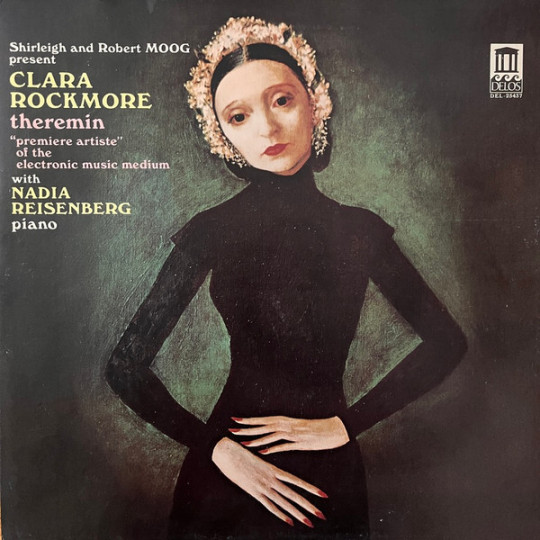
Theremin Clara Rockmore 1977, Delos (Bandcamp)
100 years since its invention, the theremin remains an oddity. It is in every respect an antiquated piece of technology, and yet like the Tesla coil and the plasma globe it still provokes the primal wonder of science-as-magic. The advancements of a modern synthesizer unit are hidden from the eye—if you presented it to an unthawed person from the 19th century, they would at least be able to infer that the device is controlled using the buttons and keys. But the theremin player creates sound by coaxing an invisible magnetic field with their bare hands, as though they are pulling its warbling voice from the air itself—and indeed, inventor Léon Theremin’s artful original name for his instrument was the ætherphone.
youtube
To watch a performance by Clara Rockmore, the instrument’s foremost practitioner, is to see something that resembles a scene from a séance or a German Expressionist film. A petite, dark-haired woman with the eyes of an Orthodox Virgin Mary, she would stand ramrod straight behind the lectern-like theremin, nearly motionless save for the almost palsied-looking convulsions of her knotted hands and the tensing of her eyebrows, the only sign on her otherwise slack features of the intensity of her concentration. She looks as though she is forcing down the song attempting to leap from her throat until it screams through her fingertips like steam from a kettle. As synth pioneer Robert Moog explains in his liner notes to Rockmore’s 1977 LP Theremin, her absolute stillness was not a theatrical device but a requirement of playing the instrument: the theremin’s magnetic field encompasses not only the performers hands but their entire upper body, meaning that even a minor motion of the head will influence the instrument’s pitch. But the austere figure she cut no doubt contributed to her allure, the sense that she was herself as unearthly as the instrument she played.
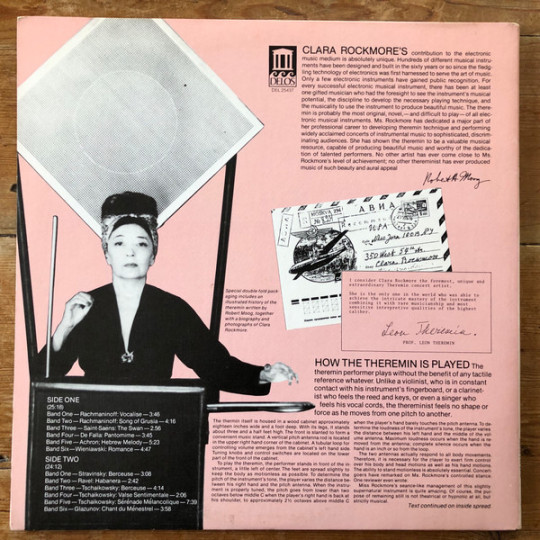
Rockmore, a violin prodigy since age 5, took to Theremin’s invention sometime in the late 1920s. Her concerts popularized and legitimated the instrument, but it would be nearly a half-century before the Theremin LP, her first, was finally released. Produced by Shirleigh Moog and engineered by her husband Robert, one gets the sense that the Moogs are fans trying to correct an oversight, to record the album as it would’ve sounded if it had been made her during her prime. The results are captivating, even haunting. At times you may be fooled into thinking you’re listening to a recording of a human soprano from some decayed shellac disc; in other moments, you will be moved by how world-weary an electronic tone can sound. Rockmore is accompanied, as she had been since the beginning, by her sister Nadia Reisenberg on piano, and her selections focus on 19th and early 20th century compositions, with a heavy emphasis on the Romantics. A majority of the pieces here come from her fellow Russians, including Tchaikovsky, Glazunov, Rachmaninoff, and Stravinsky. My personal favourite of these is her take on Joseph Achron’s “Hebrew Melody.” Inspired by traditional laments, Rockmore’s theremin evokes the sobbing characteristic (krekhts) of Jewish vocal music, while her sister thunders and pirouettes on her piano in a classically Romantic style.
Theremin stands apart from other electronic classical records like Wendy Carlos’ Switched-On Bach because it never sounds wholly like a novelty despite the theremin’s high camp potential (and, for that matter, Rockmore’s). It is peculiar, and my fascination with it definitely originated in a perverse nostalgia for esoteric junk—but the somber beauty of the sisters’ performance wiped the smirk from my face from virtually the moment I dropped the needle.
330/365
#clara rockmore#theremin#leon theremin#robert moog#moog#shirleigh moog#electronic music#early electronic#romantic music#'30s music#'70s music#classical music#nadia reisenberg#music review#vinyl record#mississippi records#joseph achron#tchaikovsky#rachmaninoff#glazunov#achron#stravinsky
12 notes
·
View notes
Text


SHARON TATE
Photographed by Frank Bez for Valley of the Dolls, 20th Century Fox 1967
Sharon Marie Tate Polanski (January 24, 1943 – August 9, 1969) was an American actress and model. During the 1960s, she appeared in advertisements and small television roles before appearing in films as well as working as a model. After receiving positive reviews for her comedic and dramatic acting performances, Tate was hailed as one of Hollywood's most promising newcomers, being compared favorably with the late Marilyn Monroe.
She made her film debut in 1961 as an extra in Barabbas with Anthony Quinn. She next appeared in the British mystery horror film Eye of the Devil (1966). Her first major role was as Jennifer North in the 1967 American drama film Valley of the Dolls, which earned her a Golden Globe Award nomination. The role would help her to become a rising sex symbol of Hollywood, appearing in a Playboy photoshoot where she would be shot by filmmaker Roman Polanski, Tate's future husband. That year, she also performed in the comedy horror film The Fearless Vampire Killers, directed by Roman Polanski. Tate's last completed film, 12+1, was released posthumously in 1969.
On August 9, 1969, Tate and four others were murdered by members of the Manson Family, a cult, in the home she shared with Polanski, while he was away. She was eight-and-a-half months pregnant
8 notes
·
View notes
Text
Meet Me in St. Louis_Roundtable 3

Meet Me in St. Louis follows the Smith family living in St. Louis the year before the 1904 World’s Fair. Esther Smith, played by Judy Garland, is the middle “child” of five siblings but is notably the most outgoing, and thus the lead, of her entire family of eight. Garland sings most of the featured songs, including those original to this film: "The Trolley Song", "The Boy Next Door", and "Have Yourself a Merry Little Christmas”. Most of the remaining songs we popular during the time of the World’s Fair.
Social Context for Musical Relevance
youtube
youtube
This film straddles two remarkably different eras of US history. The beginning of the 20th century (when the film is set) marked great changes in industrialization and first-wave feminism, while the 1940s (when the film was made) can be largely characterized by WWII and FDR’s final term. Two songs - “The Boy Next Door” and “Over the Bannister” balance these two times while mostly serving to satisfy the 1940s audience. “The Boy Next Door” follows a conversation between Esther and her older sister, Rose, who leaves her sister with the sentence “My dear when you get to be my age you’ll learn that there are more important things in life than boys”. The first few scenes of the film cover the fact that Rose, despite her “spinster” age, is not yet married. While this isn’t necessarily problematized it is heavily emphasized. Instead of following in her sister’s footsteps, Esther yearns for love and attention but seeks it out on her terms. Her relationship with the boy next door, John Truett, begins with these two songs. Last week we discussed Altman’s “inevitable couplings”: this pairing, despite falling into the heteronormative framework and finality of so many other musicals, does require effort and initiation from Esther’s character specifically. When John first kisses Esther, long after the performance of these songs, she hesitates. While this relationship is a goal for Esther, she prioritizes her family and personal needs. Rose and Esther’s overall characters and personalities are reminiscent of the feminist movement they harken from, but their ultimate decisions to settle down with comfortably wealthy men aim to please an audience engulfed in war, loss, and instability.
The Cultivation of Christmas Cheer and Nostalgia
youtube
Though half the songs are original to the score, the pieces that make this a jukebox musical serve mainly to cultivate nostalgia and joy. Again, the films release during WWII shaped the messaging required or desired by audiences. “Skip to Ma Lou” is sung to the tune of “Yankee Doodle” and other short ditties popular in the late 19th and early 20th centuries but likely still familiar to adult audiences in 1944. This party scene as a whole evokes normalcy, making the plot and characters more desirable and relatable. Other songs included in the score are “auld lang syne” and “the first noel”, some of the oldest Christmas songs that maintain their relevance to this day. Meet Me in St. Louis is often categorized as a Christmas movie despite only the last 20 or so minutes being set during the holiday season. Including these familiar songs in the score sends clear messages about the persistence of peace and being in communion with one another. These songs don’t necessarily have specific or relevant histories but they do have age-old recognition.
Melodrama Meets Musical
youtube
Meet Me in St. Louis combines opera, show tunes, and classical music to create a sound that effortlessly blends into the diegesis of the film. Erin Blakemore notes how the film lacks large, spontaneous musical numbers despite all the crowd scenes and possibilities for such fanfare. Rather, the creators integrated music into the Smith family’s regular routines: their parties and goodbyes, moments of comfort and joy. The rest of the score is used more like it would be in a non-musical drama as a sort of choral, background send-off. This movie is undoubtedly still a musical, but it's more “natural”, and perhaps more aligned with the folk musical, than the others we’ve analyzed.
@theuncannyprofessoro
17 notes
·
View notes
Text
Kaoru and Hong Kong Movies

X ( Long post!! )
It's been a while, but I found that Kaoru mentioned a lot of classic Hong Kong movies in this tweet.
These are the movies I used to watch when I was a kid, and I never thought I'd ever hear them from Kaoru one day, so I want to give a brief introduction to these movies. 😀
01. スパルタンX (Spartan X)
繁體中文:快餐車 / English: Wheels on Meals
Wheels on Meals is a 1984 Hong Kong martial arts action comedy film written and directed by Sammo Hung (洪金寶), with action choreographed by Jackie Chan (成龍). The film stars Jackie Chan (成龍), Sammo Hung (洪金寶), Yuen Biao (元彪), Lola Forner, Benny Urquidez and José Sancho.
In 1984, it was adapted into the video game Spartan X (released as Kung-Fu Master internationally).
The final fight between Jackie Chan and Benny Urquidez
🎥 Best Fight Scene 👇
youtube
02. 五福星 (ごふくせい)
繁體中文:奇謀妙計五福星 / English: Winners and Sinners (or 5 Lucky Stars)
Winners and Sinners is a 1983 Hong Kong action comedy film written and directed by Sammo Hung (洪金寶), who also starred in the film. The film co-stars Jackie Chan (成龍) and Yuen Biao (元彪), the latter serving as one of the film's action directors.
The film is followed by My Lucky Stars (福星高照) and Twinkle, Twinkle Lucky Stars (夏日福星), insofar as the "Five Lucky Stars" concept (福星系列) and many of the same actors return in those latter films. However, the character names and indeed their roles differ - Stanley Fung's character is the nominal "leader" of the quintet in Winners and Sinners (奇謀妙計五福星), whereas Hung's character takes the mantle in the latter films.
🎥 Best Fight Scene 👇
youtube
03. 霊幻道士 (れいげん どうし)
繁體中文:殭屍先生 (or 暫時停止呼吸) / English: Mr. Vampire
As this is one of my favorite movies, I will introduce more 😃
Mr. Vampire is a 1985 Hong Kong comedy horror film directed by Ricky Lau (劉觀偉) and produced by Sammo Hung (洪金寶).
The vampire of the film is based on the jiangshi (殭屍/ㄐ一ㄤˉ ㄕˉ), the hopping corpses of Chinese folklore (similar to both zombies and vampires).
"殭" means "to die immortal" (死而不朽) or "stiff" (about the same as "僵"), and "屍" means "dead body".
The film was released under the Chinese title 暫時停止呼吸 (literally: Hold Your Breath for a Moment) in Taiwan. This is because most (not all) of the 殭屍 can't see with their eyes, they can only tell where people are by their breathing, so if you hold your breath you won't get caught by 殭屍.
🎥 ※ This video is dubbed in Mandarin (with Eng subs) 👇
youtube
The film is set in the late Qing Dynasty to the early Republic of China (清朝末年~民國初期), that is, the late 19th century to the early 20th century, and most of the 殭屍 are wearing the costumes of Qing Dynasty officials.
(That's why, when I first read about the Qing Dynasty (清朝) in the history textbook, I wondered why people were all dressed as 殭屍 🤣)
🎥 ※ This video is dubbed in Mandarin (with Eng subs) 👇
youtube
The box office of Mr. Vampire success led to the creation of a Mr. Vampire franchise, with the release of four sequels directed by Ricky Lau (劉觀偉) from 1986 to 1992, and subsequent similarly themed films with different directors released between 1987 and 1992, with Lam Ching-ying (林正英) as the lead for the majority of them.
The film was the breakthrough success of the jiangshi genre, a trend popular in Hong Kong during the 1980s, and established many of the genre's recognisable tropes.
🎥 ※ This video is dubbed in Mandarin (with Eng subs) 👇
youtube
I highly recommend this movie!!
Also, I love the the movie song - Ghost Bride (鬼新娘).
🎥 ※ This song is in Cantonese (廣東話/粵語). 👇
youtube
04. Mr.Boo
繁體中文:半斤八�� / English: The Private Eyes
The Private Eyes is a 1976 Hong Kong comedy film written, directed by and starring Michael Hui (許冠文) and co-starring his brothers Samuel Hui (許冠傑) and Ricky Hui (許冠英) as well as Shih Kien (石堅) and Richard Ng (吳耀漢) in his second film role. Sammo Hung (洪金寶) served as the film's action director and Jackie Chan (成龍) was also a stuntman.
In 1979, when Jiahe Corporation (嘉禾公司) promoted Bruce Lee's (李小龍) kung fu film in Japan, it added "The Private Eyes" and changed its propaganda department to "Mr Boo!" as a call to action, it became a huge hit, earning a billion yen at the box office in Japan, followed by several Huh Brothers (許氏兄弟) comedies featuring "Mr. Boo!" as the title.
It is worth mentioning that Hsu Kuan-chieh's (許冠傑) character was voiced by the famous Japanese actor Kitano Takeshi (北野武). In 1981, Takakura Ken (高倉健) starred in "駅 STATION ", there are also male and female protagonists watching "The Private Eyes" kitchen fighting scenes. Japanese manga master Akatsuka Fujio (赤塚不二夫) has written the preface and Japanese lyrics for this film.
🎥 The kitchen fighting scenes 👇
youtube
#吳耀漢
繁體中文:吳耀漢 / English: Richard Ng
Kaoru mentioned 吳耀漢 in the tag because he passed away in April 2023. 吳耀漢 is a famous actor in Hong Kong, and he has appeared in all the movies mentioned above except Mr. Vampire.
※ In fact, 吳耀漢 appeared in 霊幻道士3 (繁體中文:靈幻先生 / English: Mr. Vampire III), a sequel to the Mr. Vampire series, which was released in 1986. I guess this is the movie Kaoru was referring to.
Speaking of 吳耀漢, I would like to recommend another Hong Kong movie: Rigor Mortis
05. Rigor Mortis
繁體中文:殭屍(2013) or 殭屍 七日重生
Rigor Mortis is a 2013 Hong Kong horror film directed by Juno Mak (麥浚龍) and produced by Takashi Shimizu (清水崇,the director of 呪怨 Juon). The film is a tribute to the Mr. Vampire film series. Many of the former cast are featured in this film: Chin Siu-ho (錢小豪), Anthony Chan (陳友), Billy Lau (樓南光) and Richard Ng (吳耀漢). *吳耀漢 is the 殭屍 on the poster. 👆
Unlike the usual Hong Kong comedies, the overall atmosphere in Rigor Mortis is very depressing. The whole movie is full of nostalgia and reluctance for Mr. Vampire, which reminds people of the glory of Hong Kong jiangshi movies back in the day. Personally, I think it is the best jiangshi movie of the last 20 years.
🎥 OFFICIAL TRAILER 👇
youtube
🎥 The Hallway Scene in the movie also uses the song Ghost Bride (鬼新娘), and the song is even more creepy as it slows down. 👇
youtube
--- --- ---
It's really happy to know that Kaoru has watched these movies.
💜 Thanks for reading 💜
Btw, today (2023/08/30, the 15th day of the 7th lunar month) is The Ghost Festival (中元節).
#kaoru#薰#movie#hong kong movies#香港電影#horror movies#long post#yinfu writing#twitter#youtube#殭屍#童年回憶#最有安全感的英叔#最近我才知道演殭屍的是元華
21 notes
·
View notes
Photo

Source: San Bernardino Sun, 13 March 1987 by Donald Kaul
This review from 1987 is too funny and I love that he calls Valjean the student’s uncle but also, it’s too optimistic about American politics lol.
Save your McGovern buttons, folks; liberalism shall rise again. And soon. You can feel it. It's not merely that the air is going out of Ronald Reagan's balloon, it's that the times they are achangin'. Many liberals these days don't even bother with a secret handshake when greeting each other. Others have taken to openly advocating such controversial liberal ideas as public education, clean water and help for the homeless. You think I'm rushing it, don't you? Well, perhaps, but you'll have to forgive me. I've just seen "Les Miserables."
Perhaps you haven't heard about it yet? You will. "Les Miz," as we on the fast track call it, is the latest stage phenomenon to hit this country. It is a grandiose musical — really more of an opera — based on Victor Hugo's novel. Like the last such phenomenon, "Nicholas Nickleby," it comes from London, and like "NickNick" (fast track again), it is going to be a smash hit. It is a genuine, hand-tooled, gold-leafed, can't-miss, must-see show.
Overlooked in the hoopla of a hit, however, is the fact that it, again like "Nickleby," is a liberal show. Its story is the triumph of bleeding heart liberalism over hard-hearted conservatism. And people are going crazy for it.
"Rambo" is out; "Les Miz" and "Nick-Nick" are in.
"Les Miz" is the story of a poor Frenchman during Napoleanic [sic] times who steals a loaf of bread to feed his sister's starving child (which is, basically, the only reason liberals ever steal). He is caught and given 19 years in prison. Released from jail, Valjean is unable to get work because of his prison record, so he breaks parole and assumes a new identity. He is a great success in business and becomes mayor of a small town.
Valjean is pursued through the years by a cop, Javert, who wears black clothes and smiles only when he steps on a butterfly.
Javert keeps rediscovering Valjean and trying to arrest him, but the ex-con is too smart for him; he keeps slipping away. In the meantime, Valjean helps any widows and orphans he finds in his path. He is a sweetheart of a guy.
But does this cut any ice with Javert? Not a cube. He's determined that Valjean pay the price for breaking parole. He reminds one of Chief Justice William Rehnquist, actually. (If Valjean had been arrested for income tax evasion instead of stealing bread, they'd have probably let him off with a warning.)
Finally, or almost finally, Javert is captured by idealistic rebels during a student uprising and is delivered into the hands of Valjean, who is being a sort of uncle to the students. Javert, naturally, expects to be shot. Instead, Valjean does the liberal thing; he lets him go. Javert later has a chance to return the favor and does, but he feels so unhappy at having violated the conservative code of honor by helping a liberal that he commits suicide.
Anvway, it all ends happily. Valiean dies, but he goes to heaven, where all good liberals go. Javert is conspicuous by his absence.
It is a great snow, the night I saw it at the Kennedy Center, Washington's liberals clapped so hard I thought their jewelry was going to fly off.
The production is a return to the drama of the late 19th and early 20th century, before movies, when one of the things you went to the theater for was spectacle, crowd scenes, chariot races, waterfalls. The effects in "Les Miz" are magnificent. A pitched street battle with students and troops is reproduced on stage, then within moments we are in a Paris sewer with the escaping Valjean. The next minute we stay with Javert as he jumps from a bridge and plunges to his death.
As I said, it’s a great show and a harbinger of things to come. You still don't believe me? Listen: in his current film, Sylvester Stallone plays an arm-wrestler. Conservatism is being downsized. In his next film he'll probably play a social worker.
Remember, you read it here first.
27 notes
·
View notes